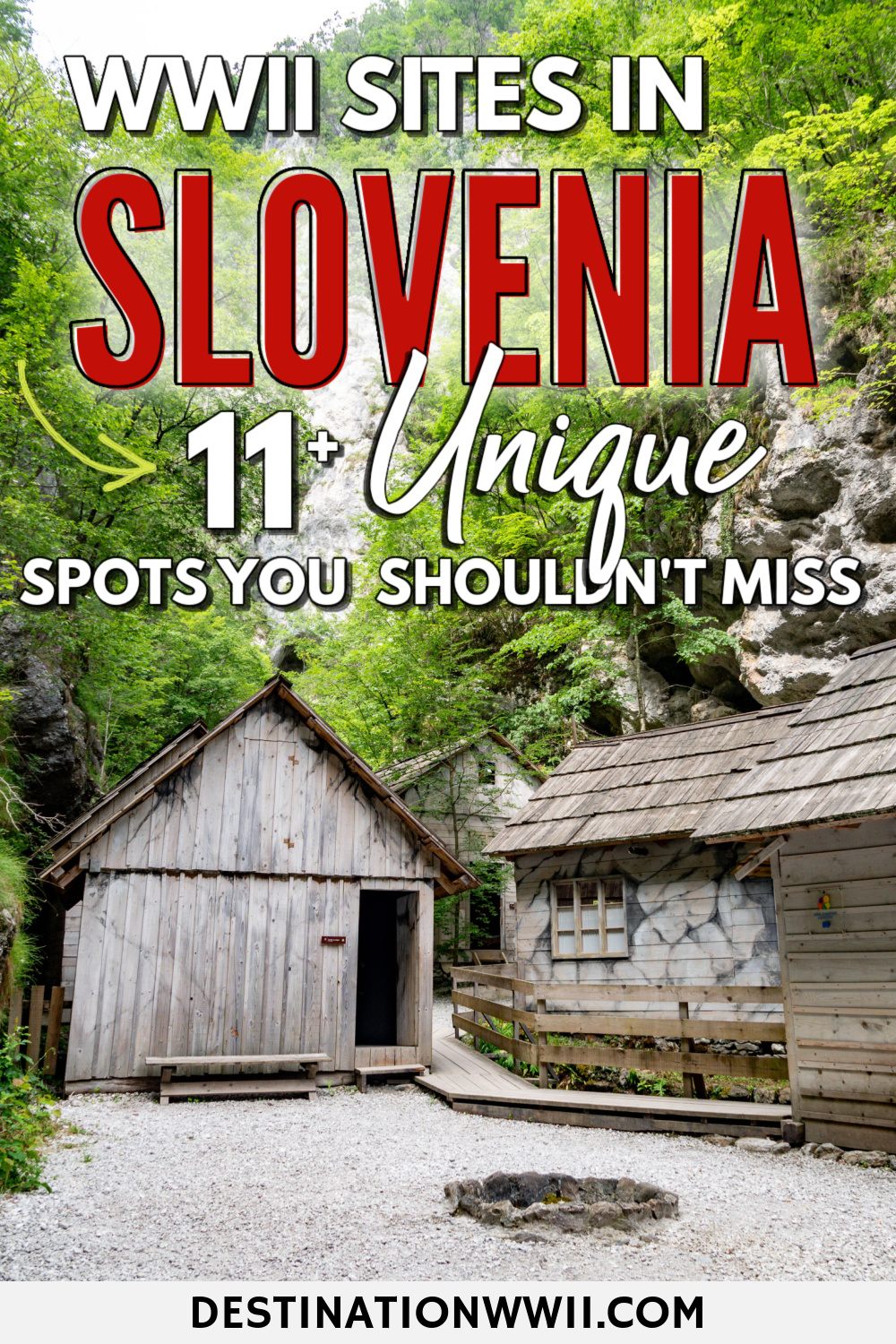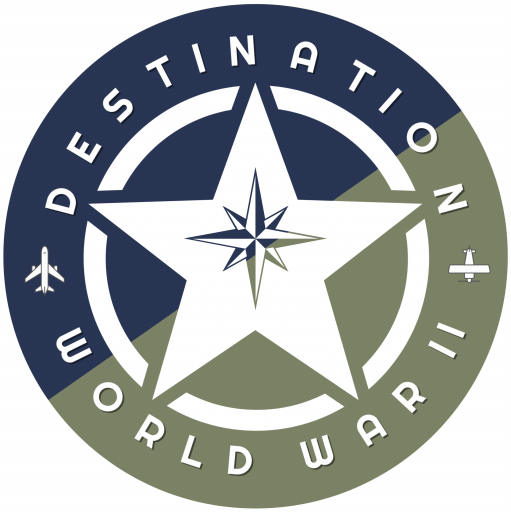When I visited in June 2023, the main problem I encountered when seeking out WWII sites in Slovenia was that there are just way too many of them. There was no way one person could visit them all in just two weeks.
While this is terrible for history, obviously, it’s a good problem to have for a history buff. Long story short: if you want to explore some unique World War II history, head to Slovenia.
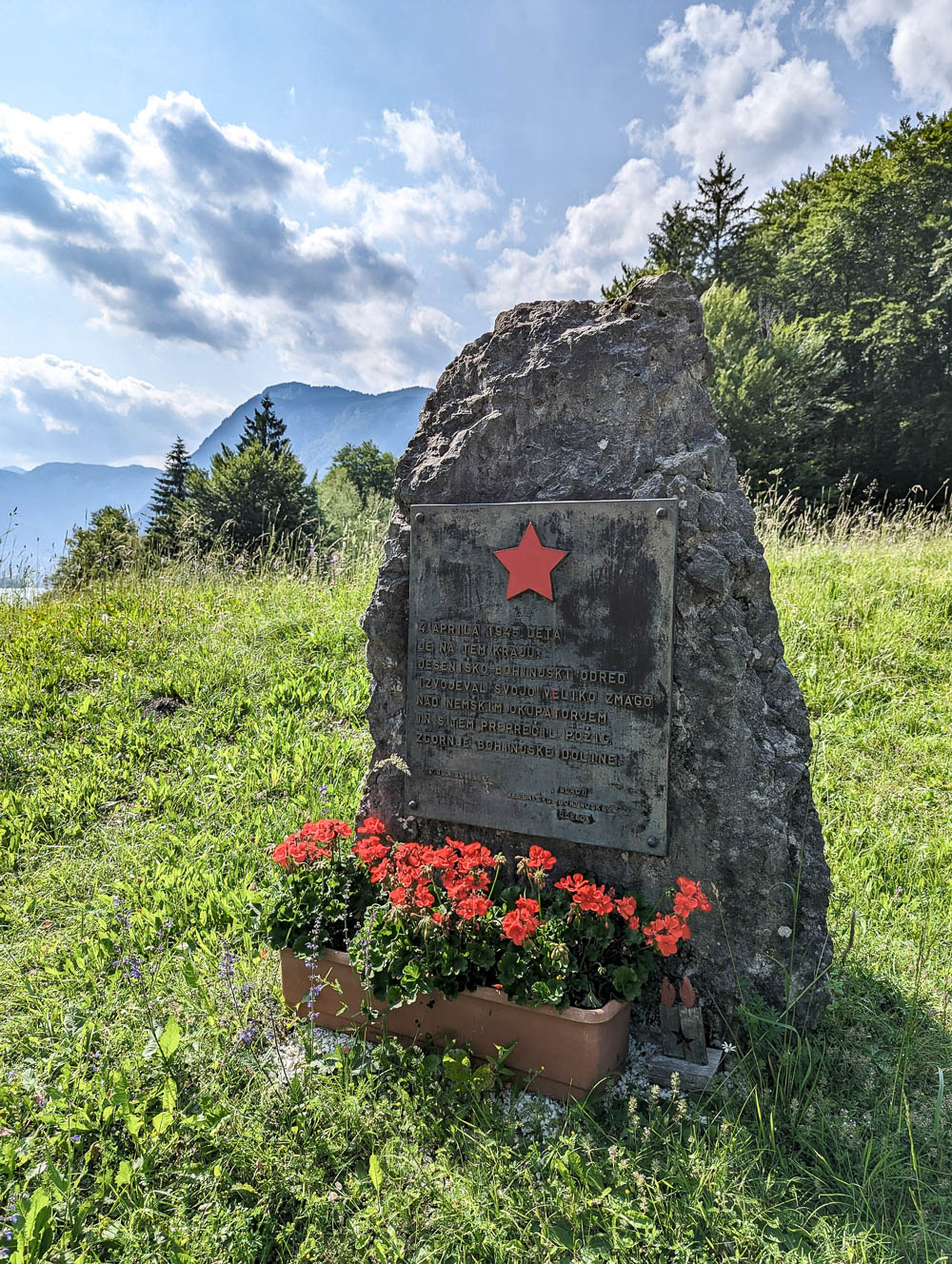
So, instead of trying to visit all the WWII sites in Slovenia (I mean, I still tried of course), what I attempted to do was narrow the list down to some of the less conventional ones. In other words, sites that go beyond your typical history museum or war memorial. This post contains what I feel are some of the more unique WWII sites in Slovenia that you should prioritize (if you have to).
What else is there to do here? Check out my 3-day Slovenia itinerary and my 5-day Slovenia itinerary here.
World War II in Slovenia
World War II came to (modern-day) Slovenia when the Axis powers invaded Yugoslavia on April 6, 1941. They immediately occupied the country and divided it amongst themselves. Fascist Italy controlled the western portion as they had since WWI and now claimed the southern portion as well. Nazi Germany claimed the north, center, and most of the eastern parts (by far the largest chunk). And one small far eastern portion went to Hungary.
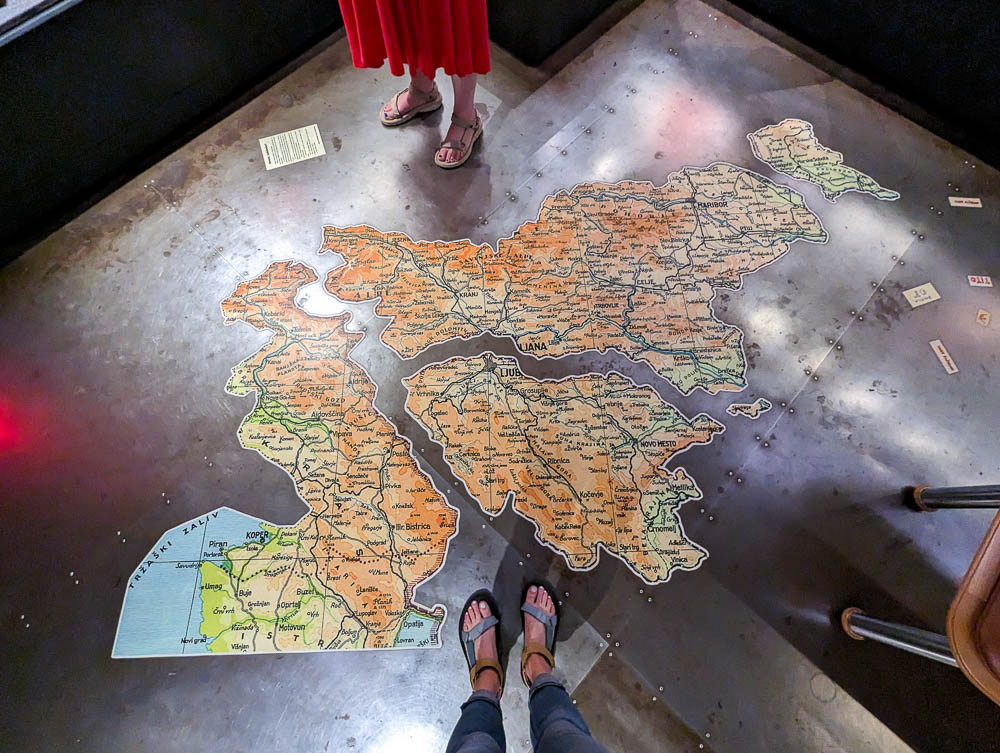
In the years that followed, Yugoslavia (ergo, modern-day Slovenia) suffered through the horrific norms of Axis occupation—murder, violence, and constant fear; deportations to concentration camps and forced labor; and the persecution of Jews, Catholic priests, and others victims of Nazi ethnic cleansing programs.
But what was not typical about the war in Yugoslavia/Slovenia was the level of resistance here, one of the most effective resistance movements of World War II, in fact.
This post covers the entire country of Slovenia. If you’re specifically looking for WWII sites in Ljubljana, the capital city, click that link for my Ljubljana-specific guide!
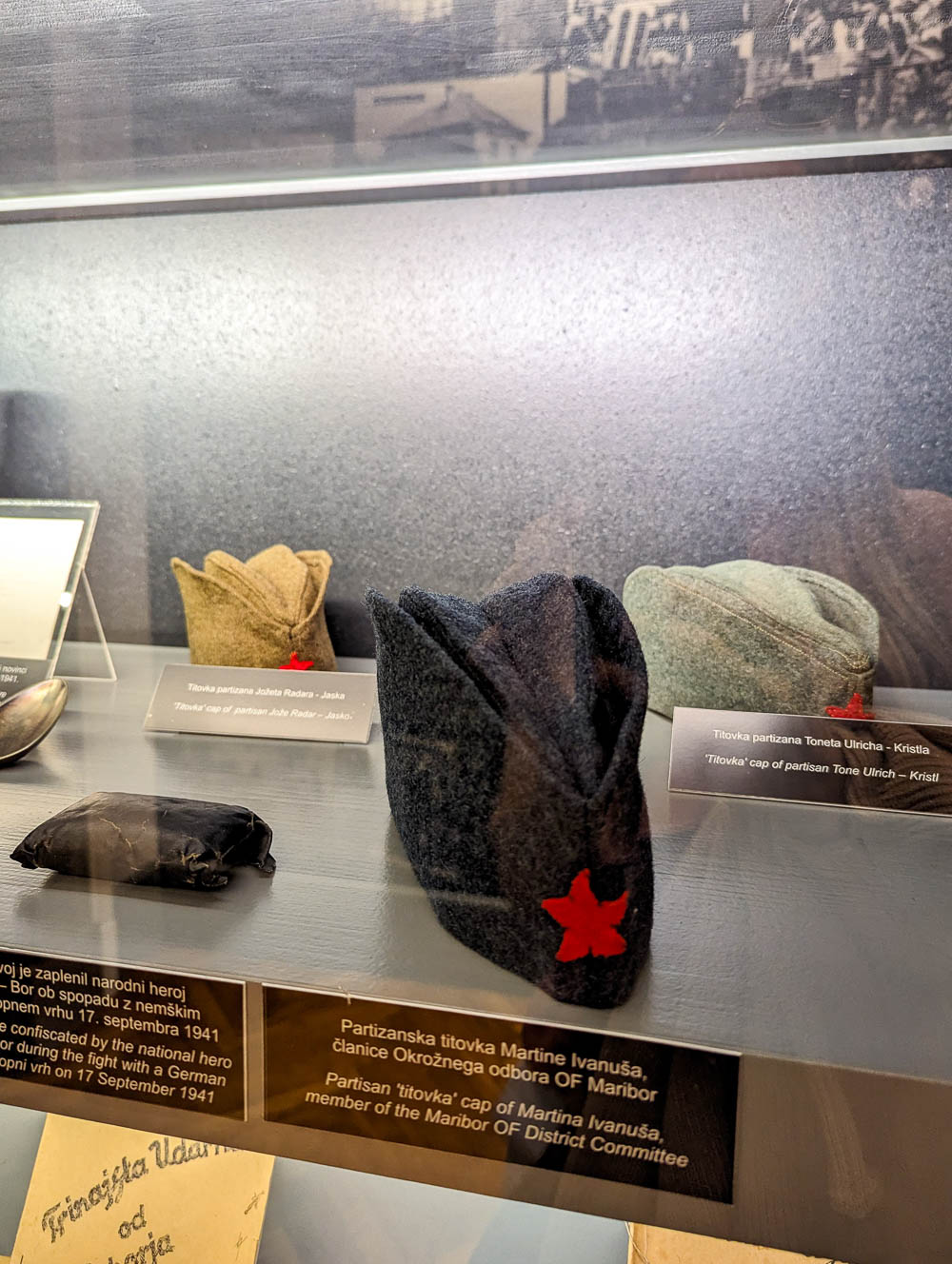
Resistance in Slovenia
Less than a month after the invasion, Slovenian communists and other political groups united and established the Liberation Front, an anti-fascist political party and resistance group led mostly by the Communist Party of Slovenia. Its armed resistance fighters (who later fought as a full-on army) were known as the Slovene Partisans.
At the same time, Josip Broz Tito (then General Secretary of the Communist Party of Yugoslavia) took control of his own military force of greater Yugoslav Partisans. Tito’s resistance forces were known as the National Liberation Army and numbered around 800,000 by the war’s end.
In 1944, the Liberation Front joined forces with Tito’s National Liberation Army. These Slovene/Yugoslav Partisans went on to become the most effective resistance movement of World War II and successfully liberated Yugoslavia themselves.
This is obviously an abbreviated explanation of what happened in Slovenia during WWII. The whole story is much more nuanced and complicated, especially regarding the events that followed the war. I encourage you to check out one of the books at the bottom of this post to learn more.
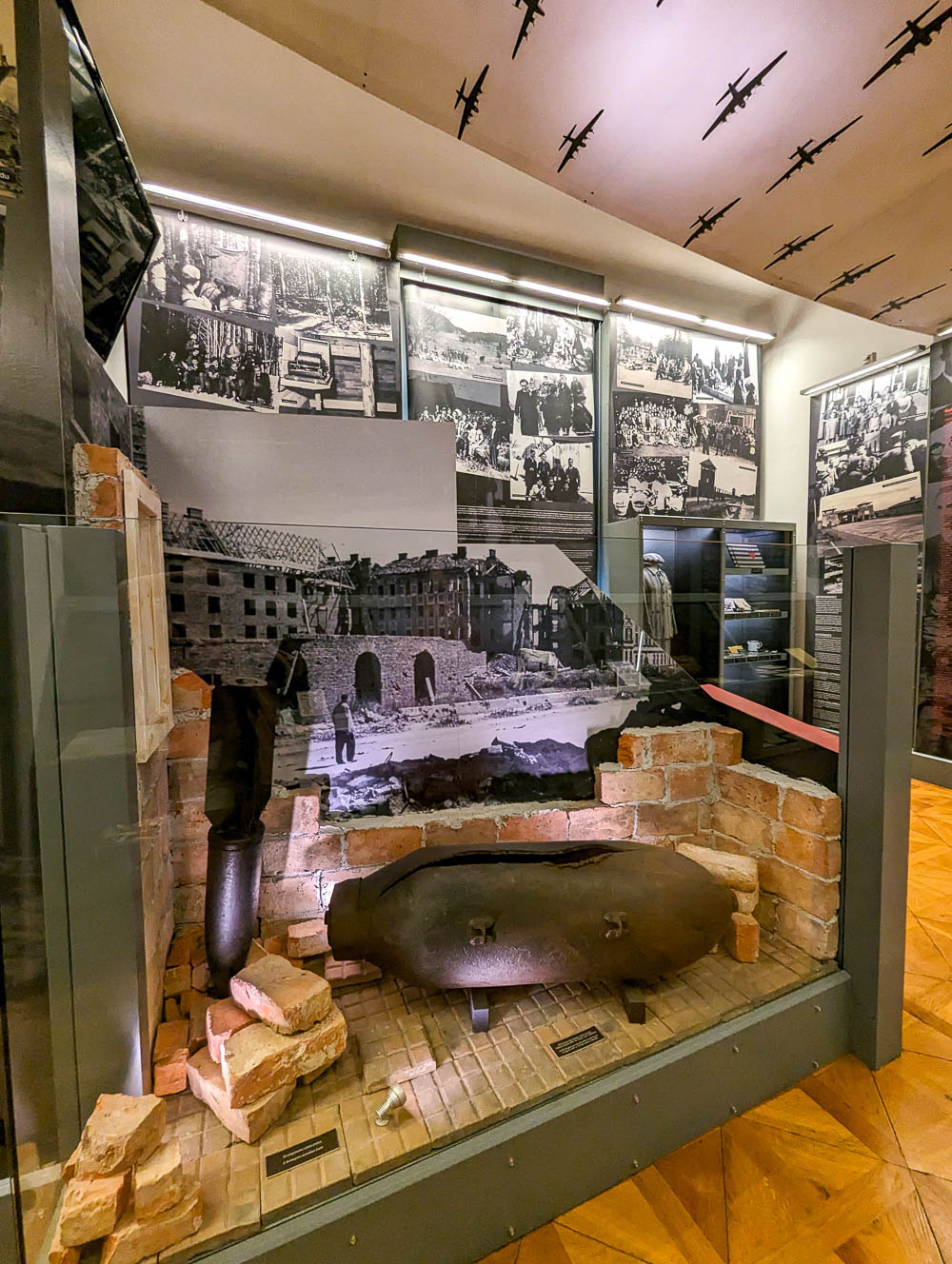
WWII sites in Slovenia
Whereas in many destinations World War II feels like just a historical event that “happened once long ago,” in Slovenia there’s no mistaking the war as this country’s defining event. In many other destinations (most, actually), sniffing out WWII sites is a bit difficult. But in Slovenia, you’ll find them almost everywhere you turn. Literally.
There are many WWII museums here and what feels like countless memorials dedicated to different events, people, and causes. But there are also several WWII sites in Slovenia that break the standard memorial mold—and that’s what this post focuses on. Here are 11+ unique WWII sites in Slovenia you should be sure to add to your itinerary.
Given the importance of the Partisan movement in Slovenia’s World War II history, it makes sense that a large number of WWII sites in Slovenia focus on the Partisans’ achievements, struggles, and heroic figures.
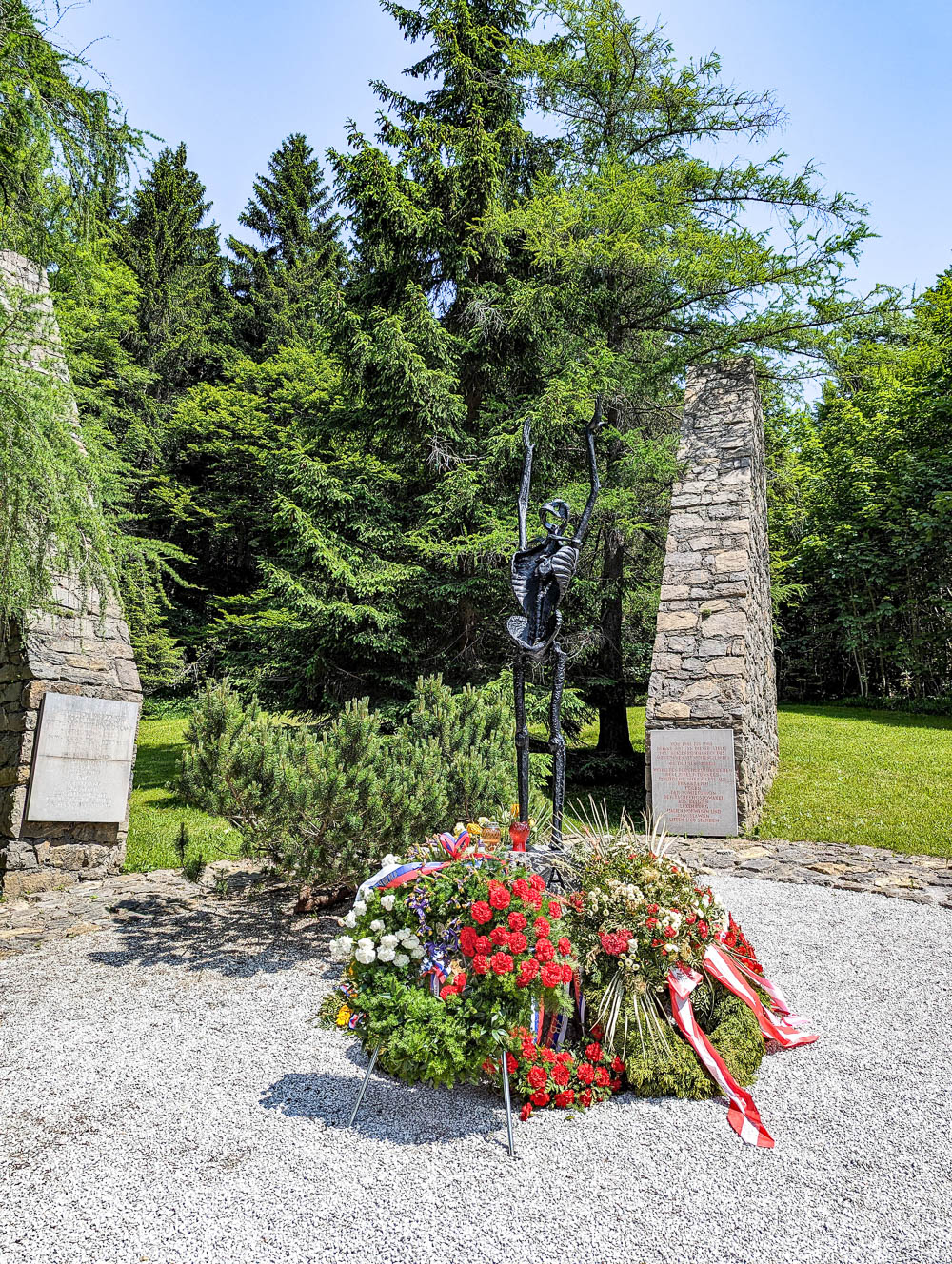
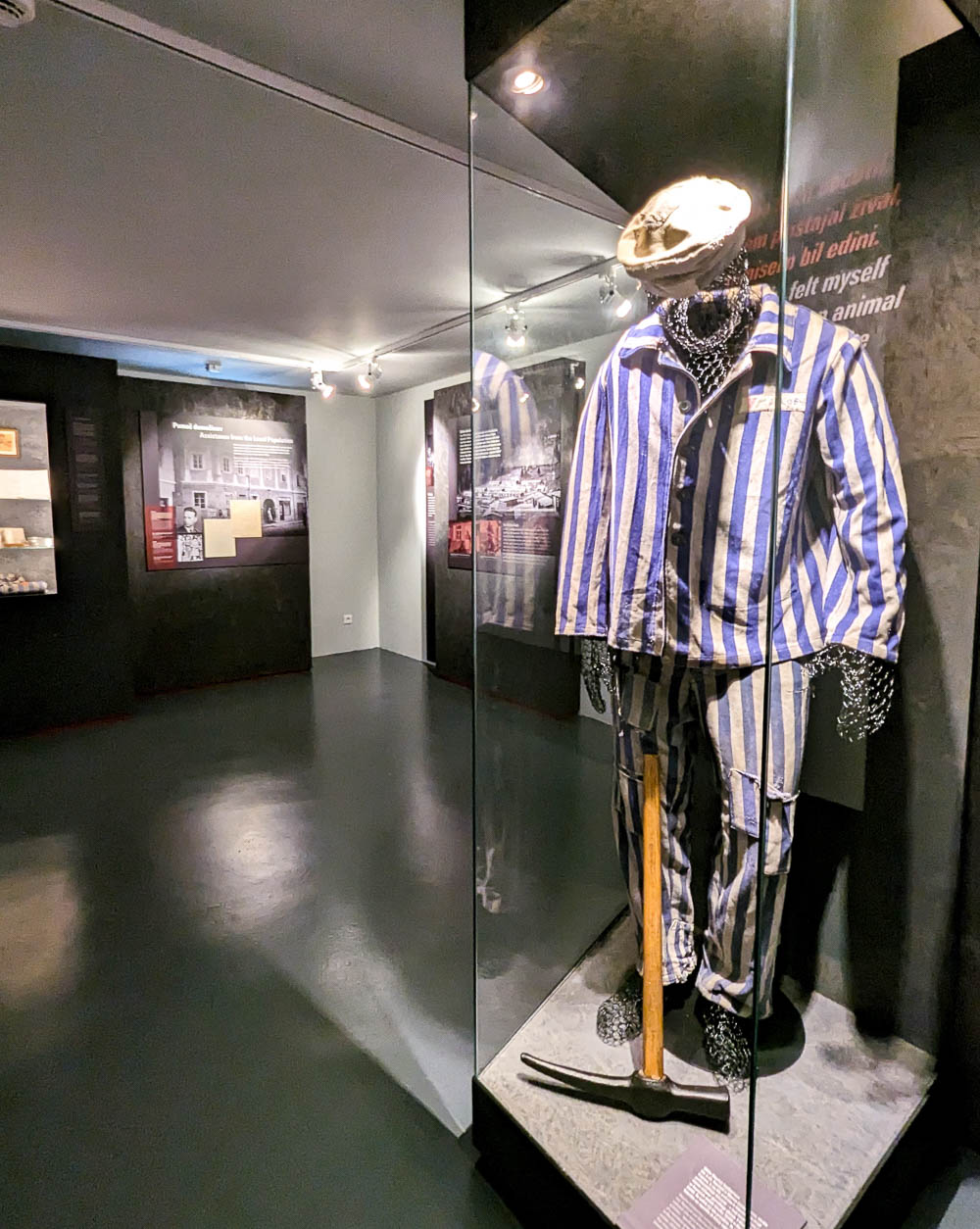
1. Ljubelj Concentration Camp
Up near Slovenia’s border with Austria is Ljubelj Concentration Camp (pronounced Loo-bell). This was the only Nazi concentration camp on Slovenian soil and is actually a subcamp of Mauthausen in Austria, one of the largest and most notorious camps.
This camp consists of two parts, one on the Austrian side and one in Slovenia. Both existed to house slave labor from Mauthausen that the Nazis used to construct a tunnel through the Karawank Mountains at the border.
There are a number of sites to see here today. When visiting Ljubelj Concentration Camp, be sure to check out:
- The Museum of Ljubelj Concentration Camp
- The Ljubelj Memorial
- Remains of the former camp
- The Ljubelj Tunnel (yes, the one the prisoners built is still used today)
- And the memorials on the Austrian side (Don’t forget your passport!)
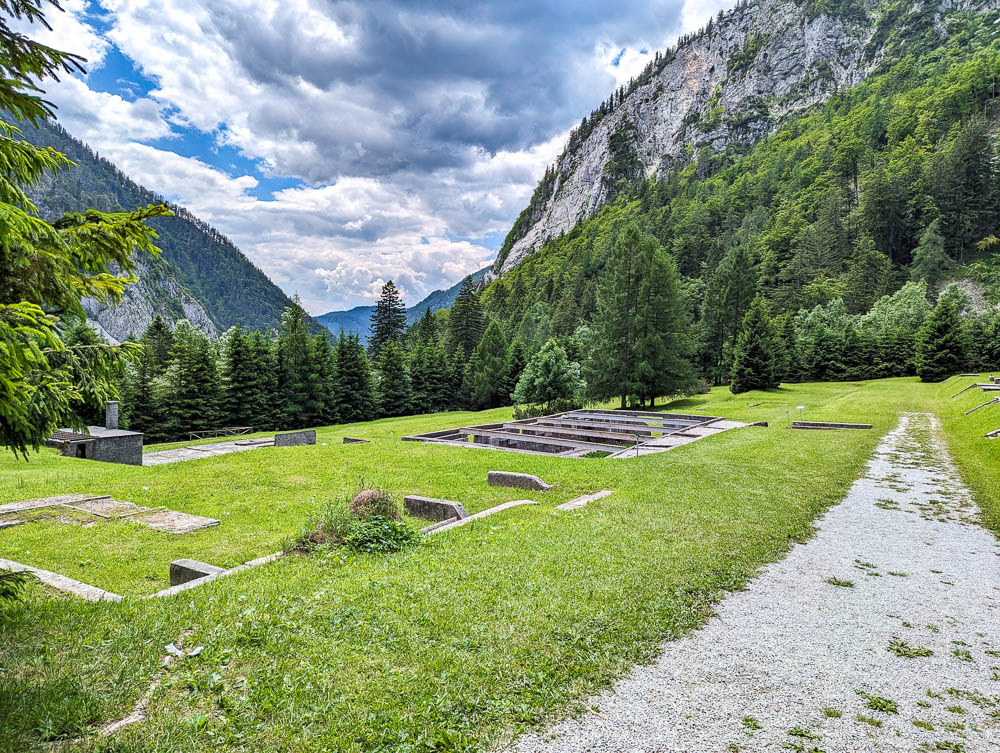
Ljubelj Concentration Camp is an easy side trip to make (if you have a rental car) and the history is very well presented. This has been just a brief summary of the site, but if you’re interested in visiting, definitely check out my entire post on visiting Ljubelj Concentration Camp. It has all the information you need!
Ljubelj Concentration Camp need to know
In total, visiting the five sites listed above took me 1.5 hours. (You can visit the museum, the memorial, and the camp remains all from one parking spot. The tunnel is just a couple minutes away.) Here’s what else you need to know for visiting Ljubelj Concentration Camp:
- Hours: The museum is open daily from 10am – 6pm. (Though it wouldn’t hurt to let them know you’re coming – you can email them here: [email protected].) All other sites are always open since they’re out in the open.
- Admission: Museum admission is €2.5, all other sites are free to visit.
Also check out my complete guide to visiting Dachau Concentration Camp outside Munich, Germany.

2. Franja Partisan Hospital
Without a doubt, one of the most extraordinary WWII sites in Slovenia is the Franja Partisan Hospital (Partizanska Bolnica Franja).
The Franja Partisan Hospital was a full hospital complex run by the Slovenian Partisans and built into a hidden gorge in the mountainous woods. It operated from December 1943 until the end of the war and helped save the lives of almost 900 resistance fighters, Allied soldiers, and others (including a U.S. Air Force pilot).
The site had facilities enough to care for around 120 patients at a time. It had barracks for the wounded and staff, an isolation ward, a pharmacy, an X-ray booth, storage, kitchen and dining, laundry and bath facilities, water collection, a power plant, defense bunkers, homes for those who were too wounded to continue fighting, and a literal pigsty for garbage disposal. Despite their best efforts to locate it, Franja Partisan Hospital was never discovered by Nazi troops.
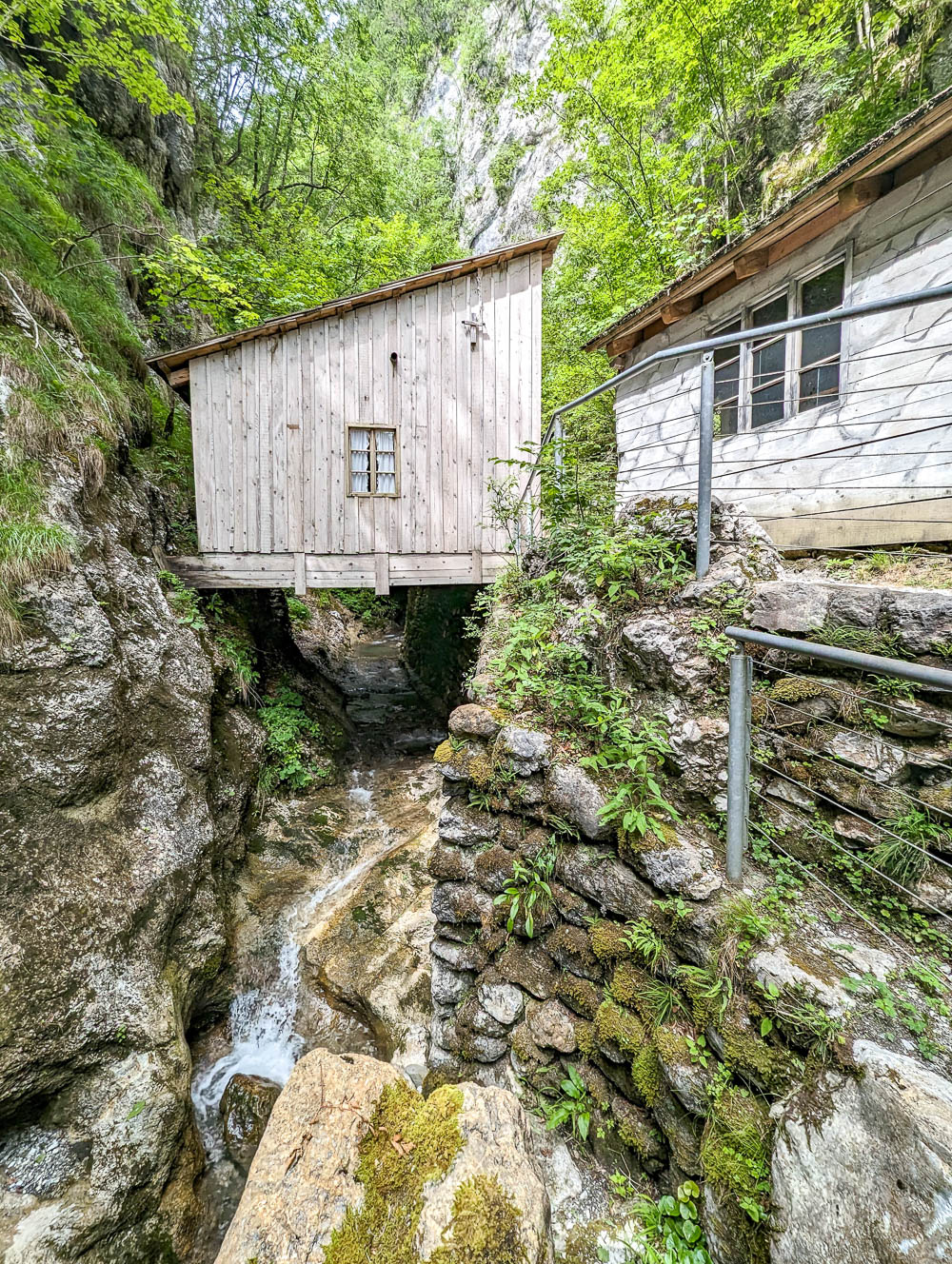
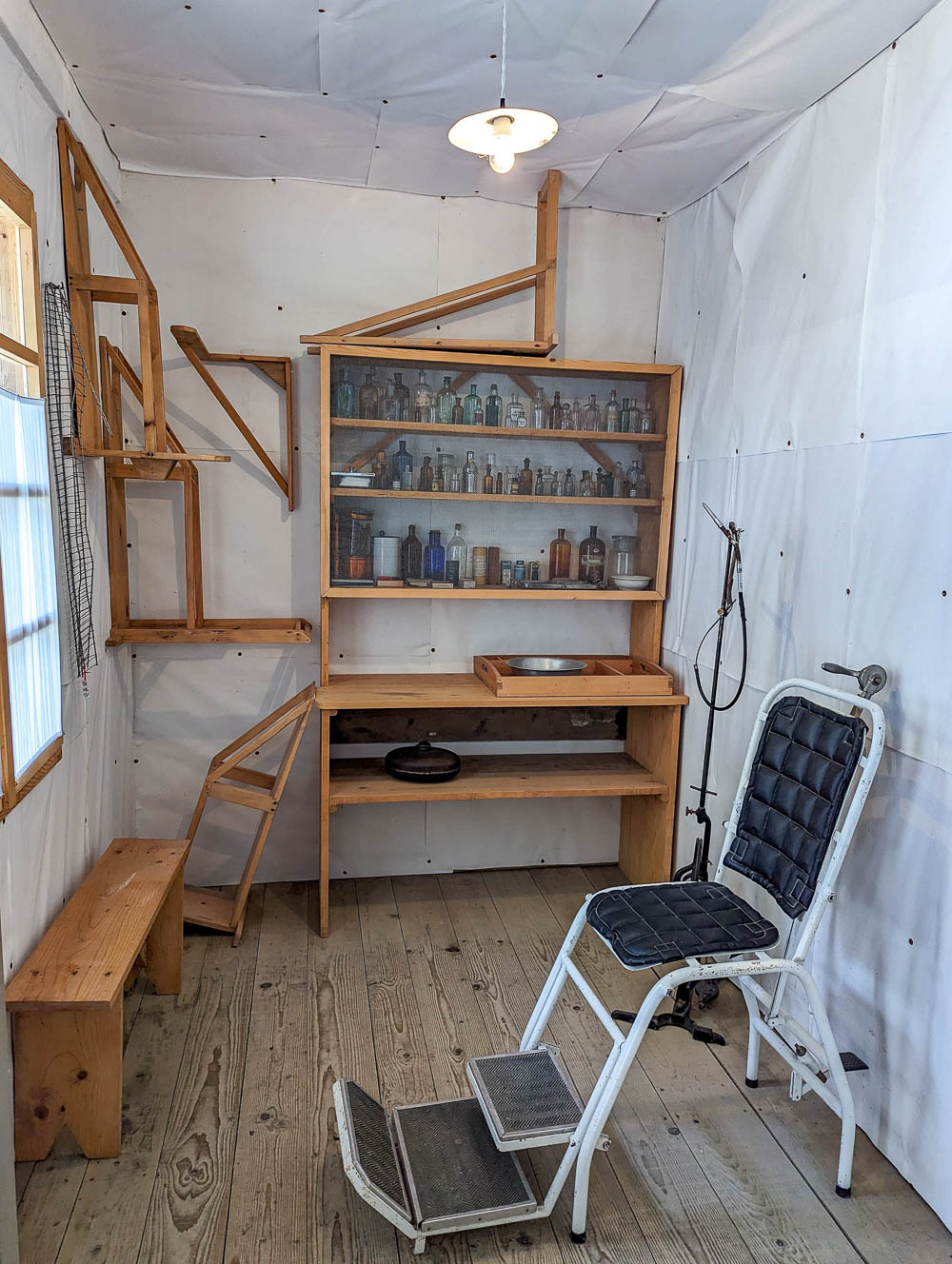
And I gotta say, this is one of the neatest WWII sites I’ve ever visited. The original buildings were preserved after the war and lasted until 2007 when the area was hit by massive flooding. They’ve since rebuilt them and it’s easy to get a sense of what life was like there during the war.
You can visit almost all of the buildings, and most have been set up to resemble how they originally looked. Inside are descriptions of what the building was used for, some archival photographs, and first-hand accounts of what took place there from both wounded soldiers and staff members.
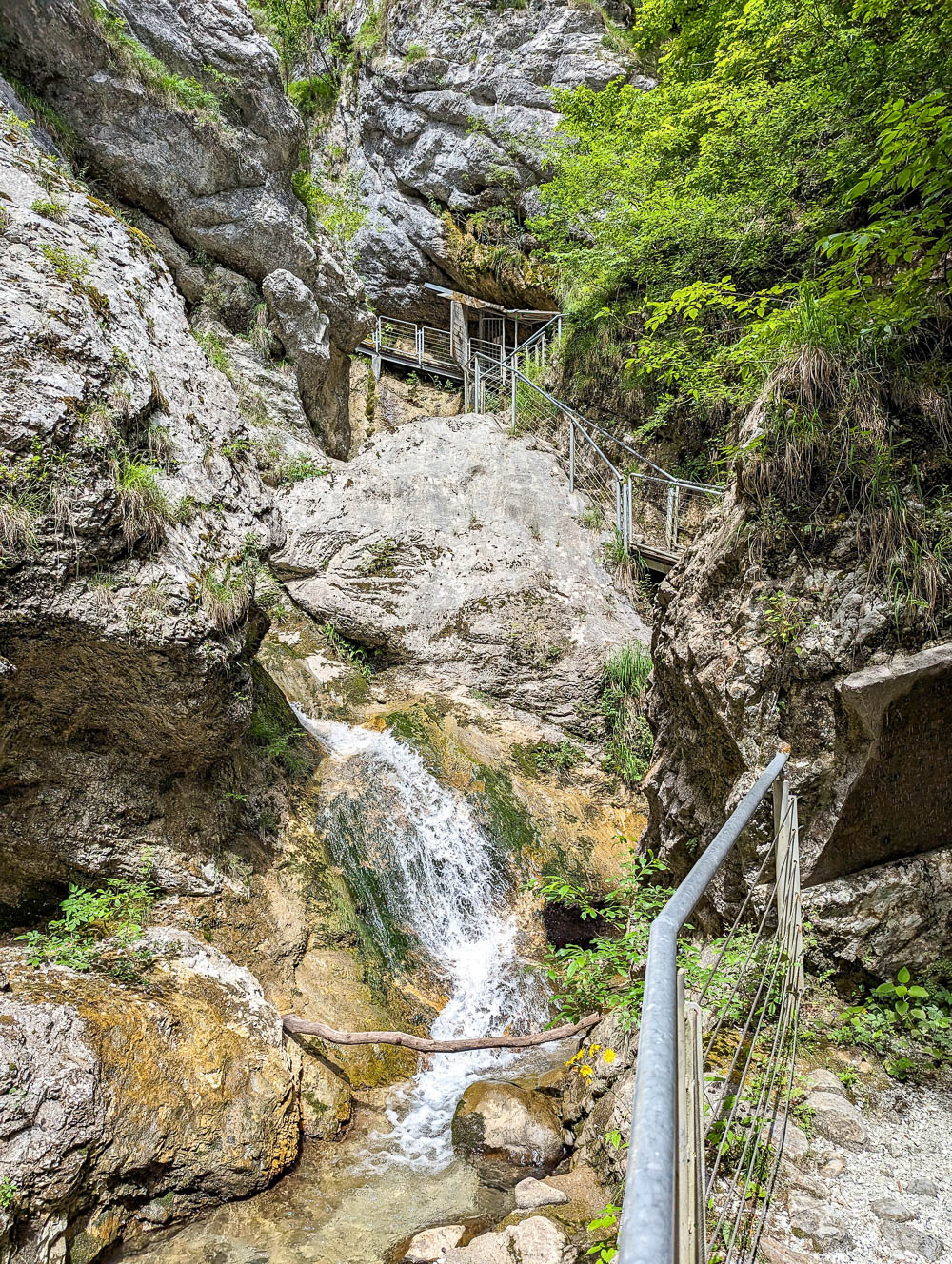
Also read: Terezín Concentration Camp from Prague: How to Get There & What to See
How to get to Franja Partisan Hospital
It took me two separate attempts to reach the Franja Partisan Hospital. For whatever reason, Waze first took me down a route that wasn’t even a road. I got stranded in a hay field on top of a mountain. (True harrowing story.) A few days later, I quadruple-checked my route and made it there without issue. So, please double check your route and make sure it takes you down numbered roads the entire way. And if you end up on a gravel path clearly meant for a tractor, turn around.
Once you make it to the (free) parking area, it’s about a 15-minute walk through the woods to the hospital. Along the way there are several memorials and informational signs that tell you about the hospital and the different locations you’re walking past.
Here’s everything else you need to know about driving in Slovenia.

Franja Partisan Hospital need to know
This walk from the parking area to the site is actually more like a light hike, so wear appropriate outdoor shoes. There is a designated pathway, but it’s still pretty rugged with a lot of ups and downs.
At the parking area there’s a small café with bathroom facilities. Stop there before you head to the hospital if you need either of those things. Here’s the practical information:
- Hours: Open daily from 9am to 6pm (April-September), 9am to 4pm (October), and by appointment only from November to March.
- Admission: Full price adult admission is €8 (many discounts available).
- Guided tours: Available for groups with prior notice
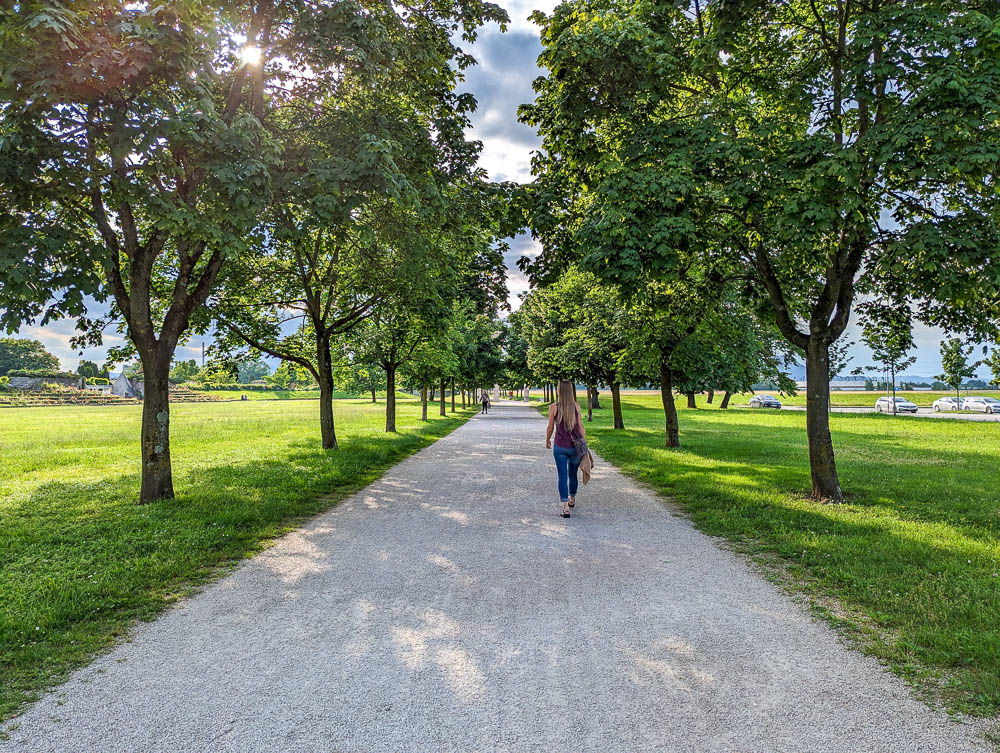
3. Path of Remembrance and Comradeship
Another of the unique WWII sites in Slovenia is the Path of Remembrance and Comradeship in Ljubljana. Actually, it goes all the way around Ljubljana.
The Path of Remembrance and Comradeship (also known as the Green Ring, the Trail Along the Wire, or simply POT or PATH) is a 20-mile walking/recreation path that encircles the entire Slovenian capital. It follows the barbed wire outline that surrounded the city during World War II.
From 1941-1943 the Fascist Italian occupiers encircled Slovenia’s capital by a barbed wire boundary. Its purpose? To prevent the city’s oppressed citizens and Liberation Front members from communicating with partisans on the outside.

Today, the trail is a popular recreational area you can access from just about anywhere in the city. All along the route you’ll find trail information signs, memorials, and even some remains of the Italian bunkers. There are 102 memorial markers at each of the locations of Italy’s 102 bunkers that surrounded the city.
The trail has its own mobile app and every year on May 9 tons of people gather together for an organized walk along the POT. (May 9 is Ljubljana’s major holiday that commemorates the partisan victory over the Axis occupiers.) You can download the mobile app from this page.
Given the size of this memorial path, I didn’t have time to walk the entire route, as much as I wanted to. But I highly recommend checking out this page by Franc Žlanhtič that’s full of beautiful photos from all around the trail and tons more information.
- Hours and admission: The Path of Remembrance and Comradeship is always open and always free.
- Starting point: There is no official starting point as it’s completely open. I personally jumped on just outside the Žale Cemetery.

4. Žale Cemetery
And while you’re there, you definitely must check out Žale Cemetery. This massive cemetery on the outskirts of Slovenia’s capital city contains loads of WWII memorials and war graves (which I’ll talk more about in an upcoming post, hold tight).
But what makes this cemetery especially unique among WWII sites in Slovenia is that among these Slovenian war graves and memorials are also the German military cemetery and the Memorial to the Slovene Home Guard.
The Slovene Home Guard was an anti-Communist (and therefore, anti-Partisan) militia group that effectively partnered up with the Nazis. Basically, it consisted of Slovenians who helped the Nazis fulfill their Nazi agenda within Slovenia.
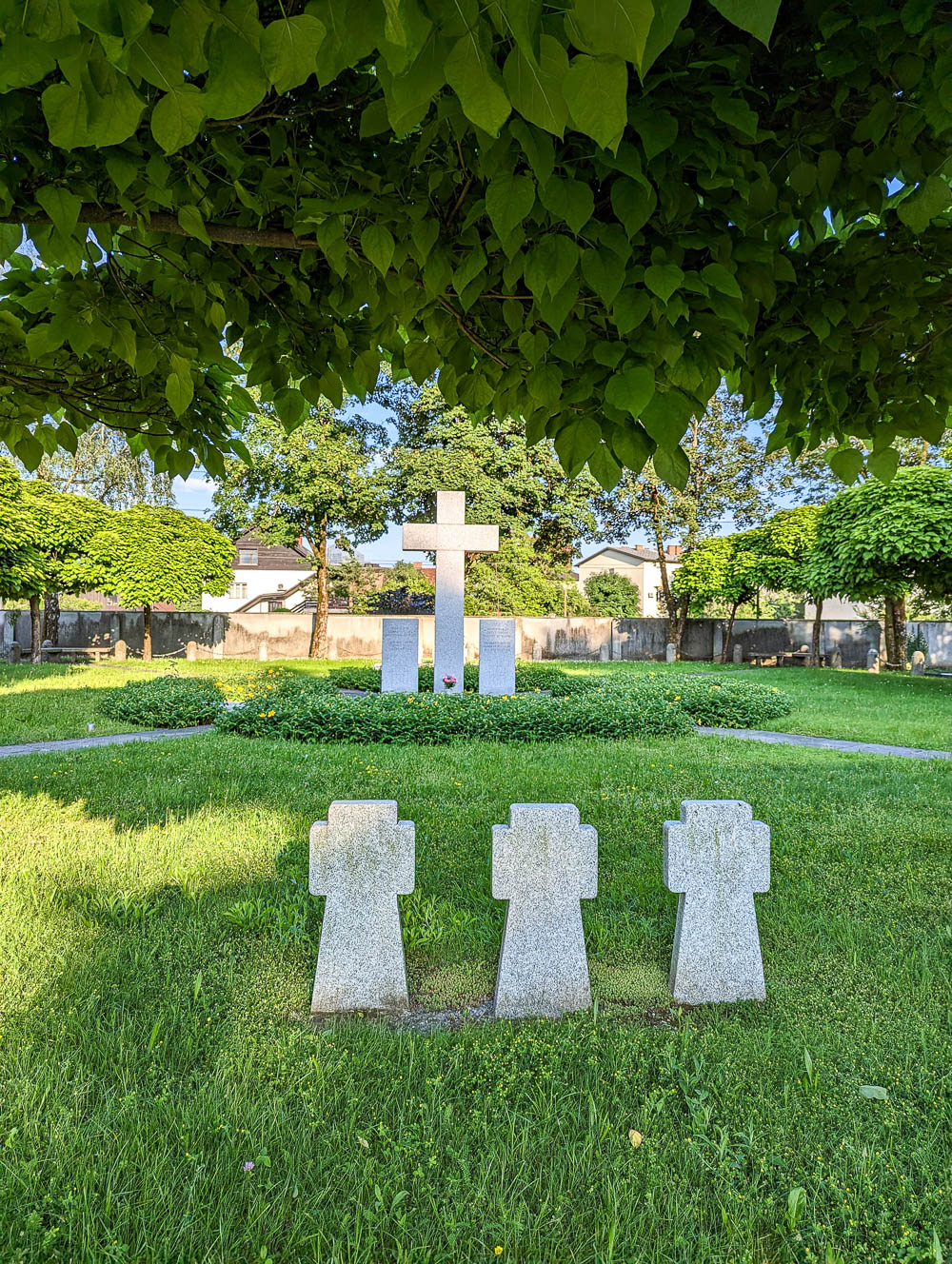
In Normandy, for instance, there are German military cemeteries that contain the mostly anonymous graves of Nazi troops killed there during the Battle of Normandy. But, these are in separate locations. For obvious reasons, you would never expect those graves to be located within, say, the Normandy American Cemetery. But in Slovenia, there they are, within the same confines as the Monument to Russian Soldiers and the Memorial to Slovenian hostages, among others.
Slovenia’s complicated WWII history
While this is unique to World War II cemeteries in general, it’s actually par for the course when it comes to Slovenian WWII history. Slovenia’s history, especially that of WWII and the period after, is beyond complex and full of what historian Keith Lowe calls “apocalyptic flavor.”* Just as their Axis and Allied war graves and memorials are located in the same cemetery, so are their histories tangled up together in a messy knot.

Žale Cemetery is one of the easiest places to experience the discomfort that comes with attempting to make sense of WWII history in Slovenia. In most other locations, like Normandy, the WWII sites you visit feel very organized and orderly—good here, evil there. Good guys, bad guys. And while it may be that simple to some, the war in Slovenia was anything but black and white.
*Seriously, read chapter 13 of Keith Lowe’s Prisoners of History. It provides a concise rundown of Slovenia during World War II and all the key players and events.
Visiting Žale Cemetery
- Hours: 7am-7pm (October-March) and 7am-9pm (April-September)
- Admission: Free to visit
- Guided tours: Available from early March to late October, every first Saturday of the month at 10am. Lasts 2 hours. (The website says you need to book the tour in advance and gives a link, but there are no cemetery tour options on the page it gives you. I would send Žale an email to ask about the tours directly if you’re interested.)
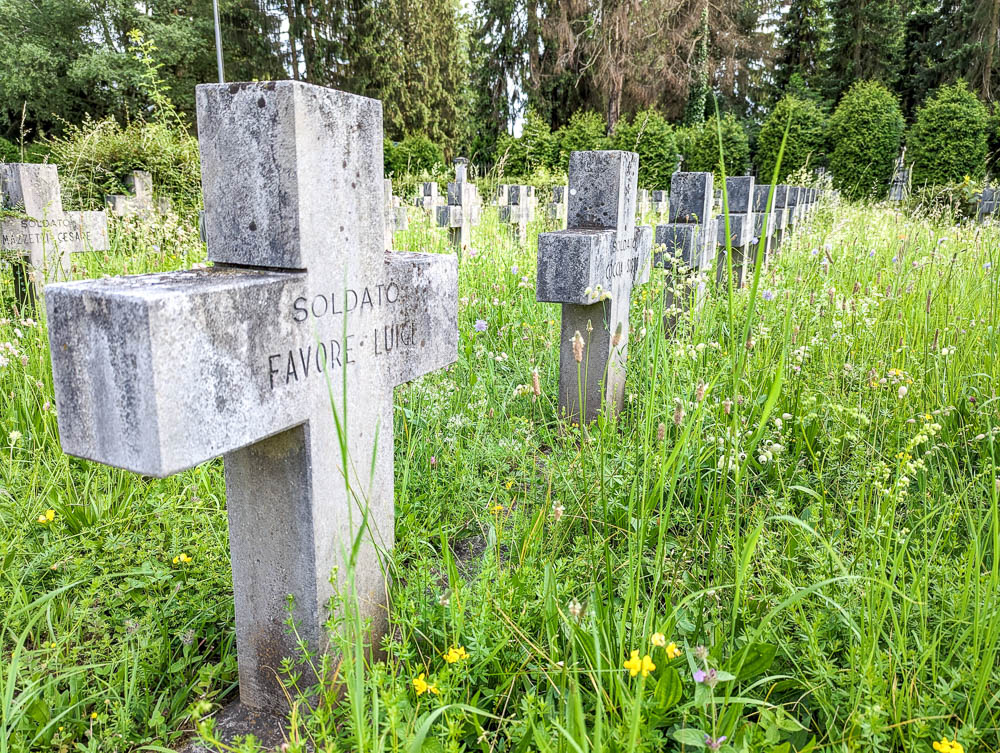
Slovenia’s underground WWII tunnels
The fact that World War II was actively fought in Slovenia awards us travelers some unique visiting opportunities, more of which are located in the towns of Kranj and Maribor.
5. The Kranj Tunnels
Just half an hour north of Ljubljana is the town of Kranj, home to a series of tunnels hidden beneath the town center. The tunnels (about 4,300 feet worth) were built during WWII and functioned as air raid shelters. The Kranj tunnels are used for all sorts of different events today, but one thing you’ll find down there is a recreated WWII bunker.
To visit the Kranj tunnels, you can book either a guided or self-guided tour. Get all the latest tour information on the Kranj Tunnels website.
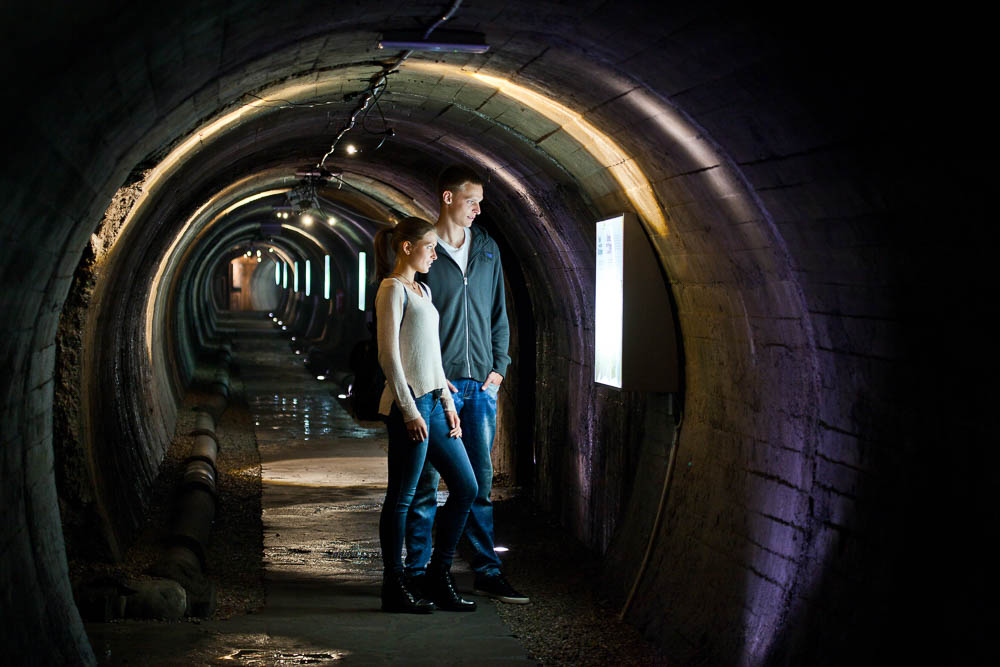
6. The Tezno Tunnels in Maribor
On the outskirts of Maribor (Slovenia’s second largest city), you’ll find the Rovi Tezno, or Tezno Tunnels. Like the ones in Kranj, these were constructed at the height of WWII. But unlike the Kranj tunnels, the ones in Maribor served not as shelters, but actually as the location of a full-scale, underground Nazi aircraft engine factory.
While here, you’ll descend 50 feet below the surface where you’ll get to tour the tunnels, relive an Allied air attack (yay?) and view their historical exhibition.
You also can only visit the Tezno tunnels on a guided tour. You can get more information on when those are available here. Standard adult admission is 10€ per person.
One important thing to keep in mind when planning to visit the Tezno tunnels is that, given their nature, they often close due to flooding. (They were closed during my visit.) They keep their website and Facebook page updated on this so check these before you make any solid plans.
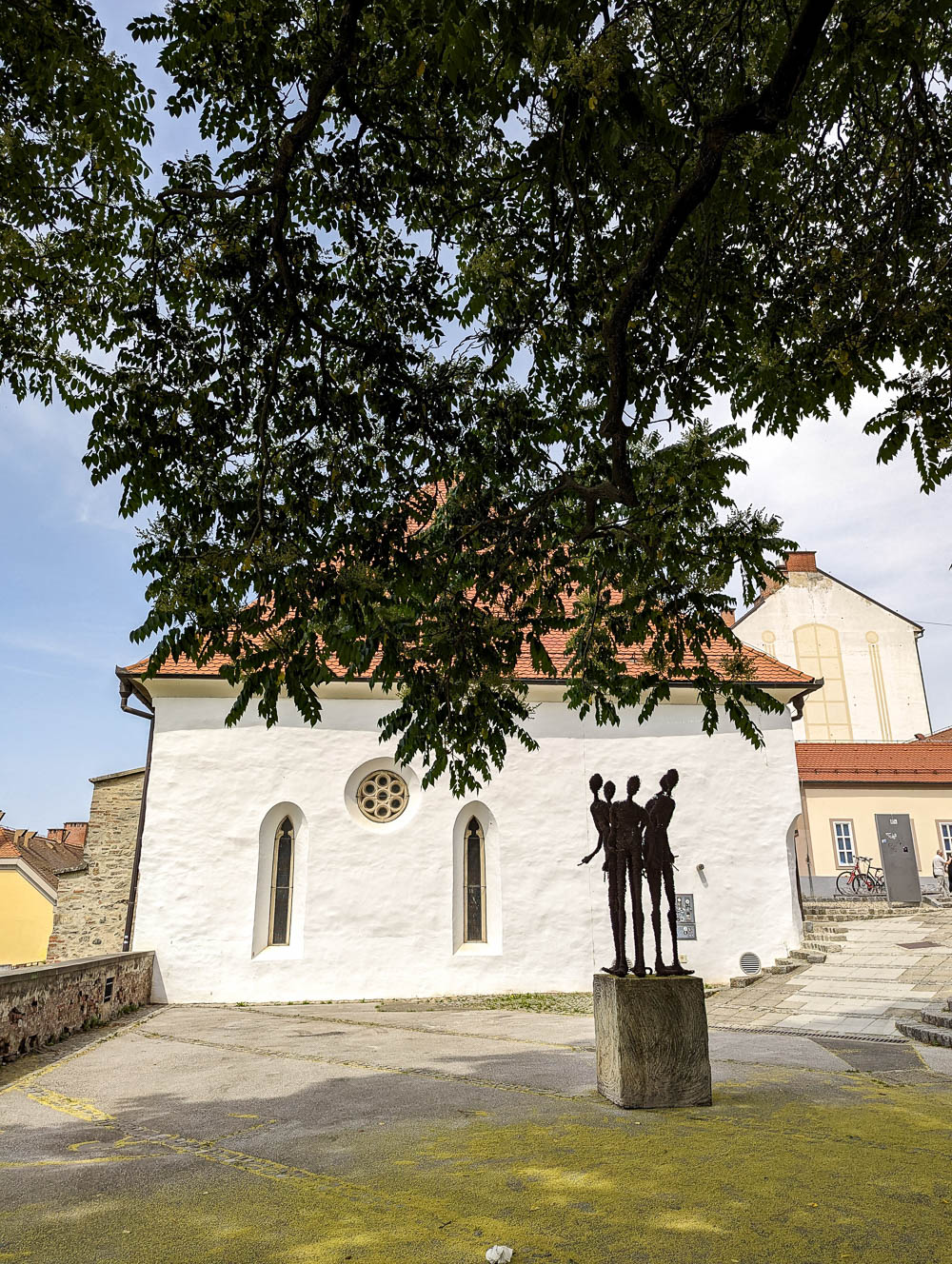
7. Maribor Synagogue
While in Maribor, walk over to the Maribor Synagogue. This is one of the oldest Synagogue’s in Europe (1300s) and also serves as the city’s Holocaust memorial and museum.
The Maribor Synagogue is located just on the edge of the town center and hosts changing museum exhibitions. For instance, the exhibition on display during my visit was A Tale of Two Transports: The Jews of Međimurje and Prekmurje During the Holocaust. To paraphrase their own words, this exhibits tells the story of the long history of Jews in these two areas (and Slovenia), more about Jewish communities here, their contribution to the development of the cities in both regions, and the two transports that took them to the camps.
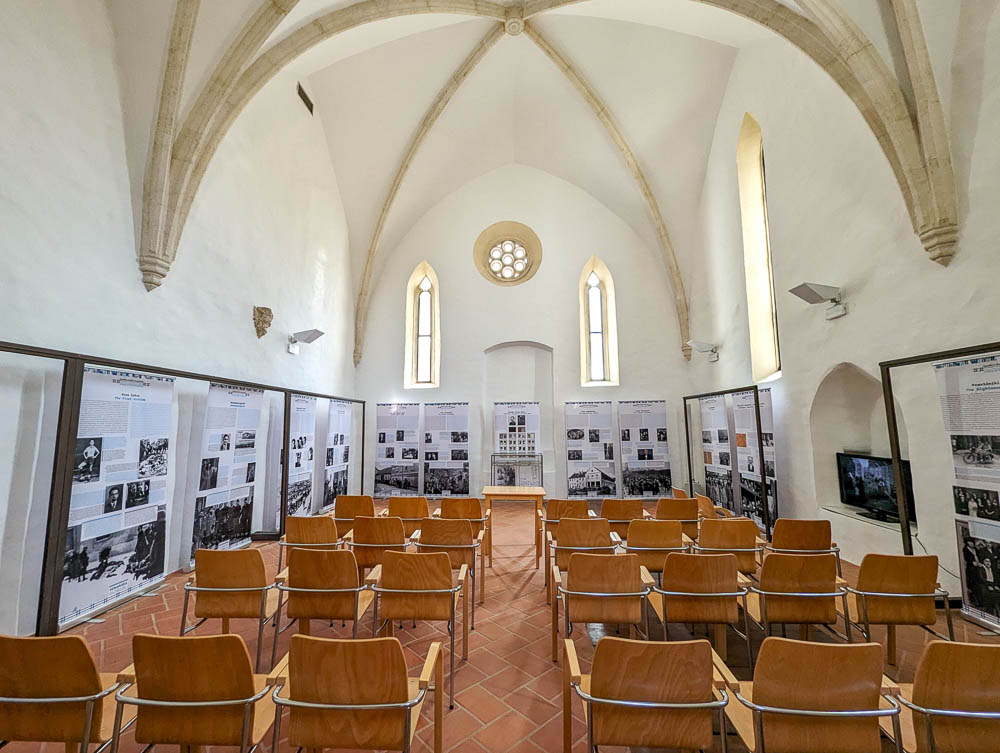
Sure, you’ve been to Holocaust museum exhibits before, but to do so in one of the oldest synagogues in Europe is an entirely unique experience. My friend and I were the only ones in this medieval building during our visit and the whole exhibit did such a great job of explaining Jewish life in Slovenia. (That of which was almost entirely wiped out during the Holocaust.)
Visiting Maribor Synagogue
To visit Maribor Synagogue, first check their website to see which exhibit is currently on display.
- Hours: Monday-Friday 8am-4pm
- Admission: 2€
- When you get there: Use the door knocker and wait for someone to let you in.
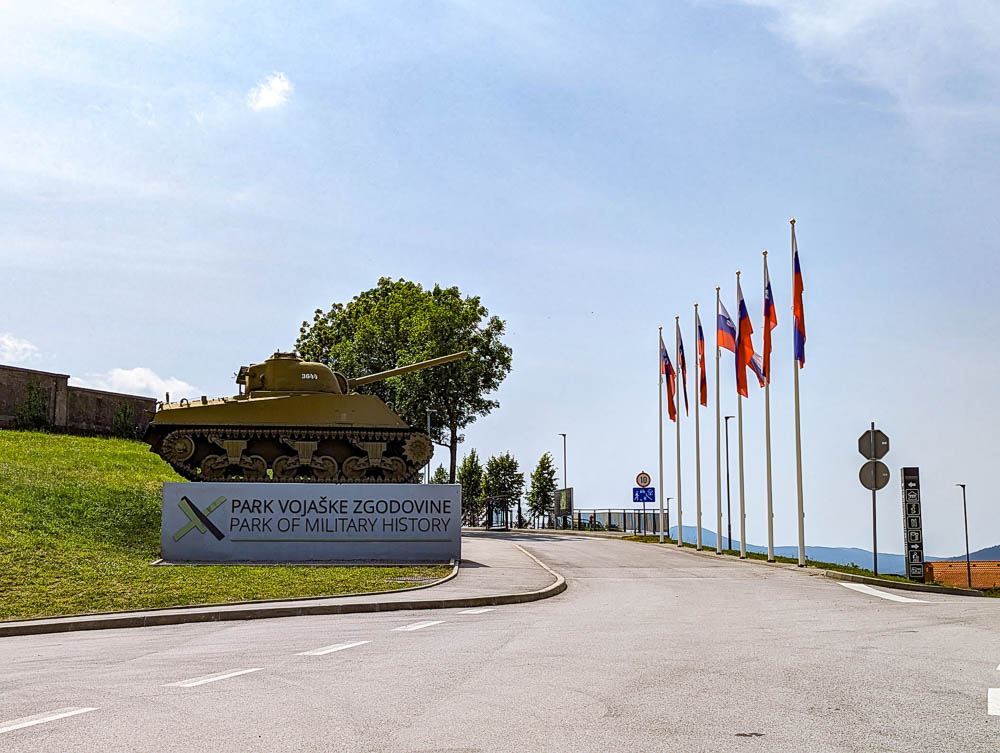
8. Military History Park
And if it’s more museums you want, definitely stop by the Military History Park in Pivka. And seeing as how it’s grown to be the largest museum complex in Slovenia, prepare to spend a whole lotta time here.
The Pivka Military History Park is located in the old Pivka barracks complex—home of the Yugoslav People’s Army from 1945-1991. Its focus is Slovenian national history as well as its role in world history, with a military slant, of course.
Inside, you’ll have the chance to check out tanks and artillery (the museum’s main collection), vehicles of all types, cannons, aircraft, and tons more. And A LOT of the collection here is American. If you love tanks, vehicles, heavy artillery, and aircraft, this may be your favorite among the WWII sites in Slovenia.
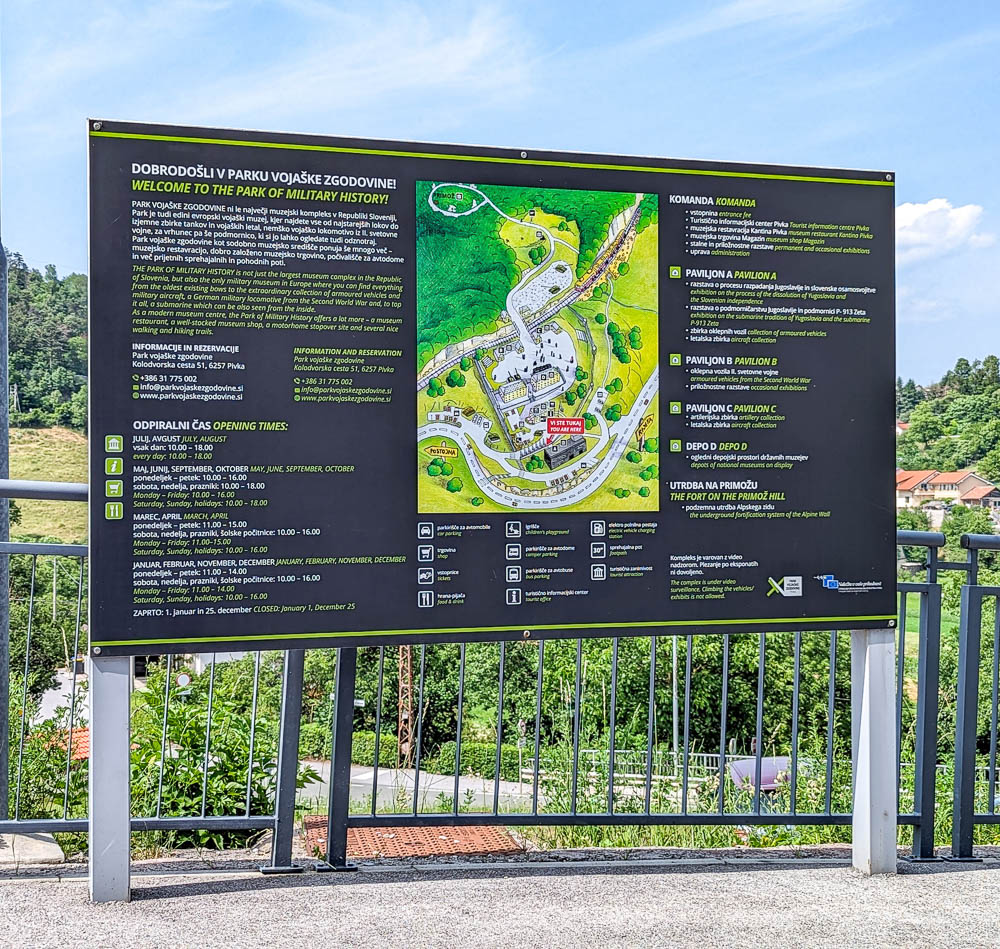
Visiting the Pivka Military History Park
There really is so much to see here, so be sure to dedicate enough time.
- Hours: There are many schedules; view their different operating hours here.
- Admission: 12€ for standard adult admission
If you love WWII tanks and other vehicles, definitely plan a visit to the American Heritage Museum.
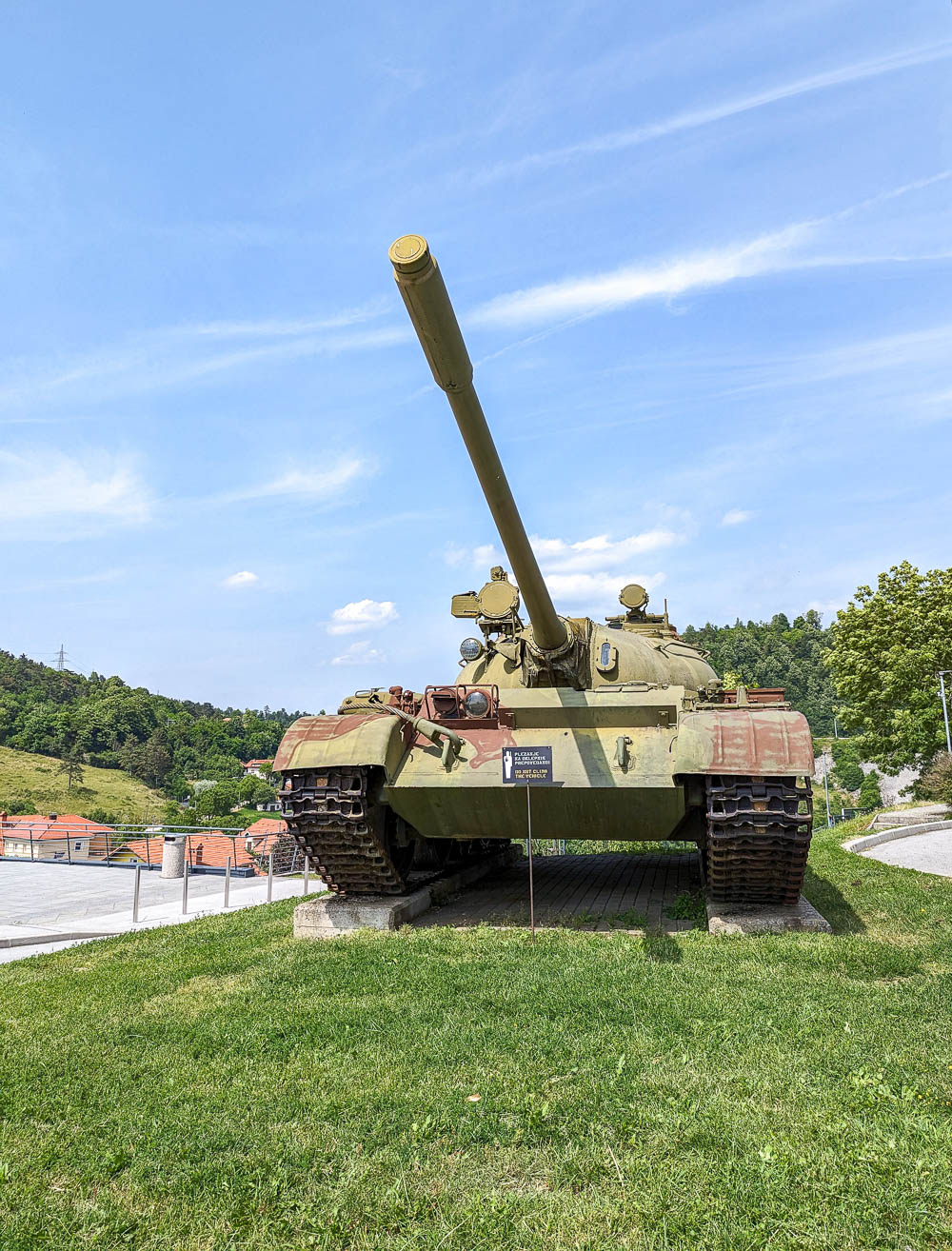
9. Partisan Printing House
Similar to the Franja Partisan Hospital, the Partisan Printing House is a series of wooden buildings built in the woods by the partisans during World War II. Here, the partisans printed the only daily newspaper of any European resistance movement.
The buildings here—which include the power station, engine room, restroom, foundry and bedroom, kitchen and dining room, and bookbinding room—are all fully preserved in their original state. They’ve been welcoming curious visitors since 1947!
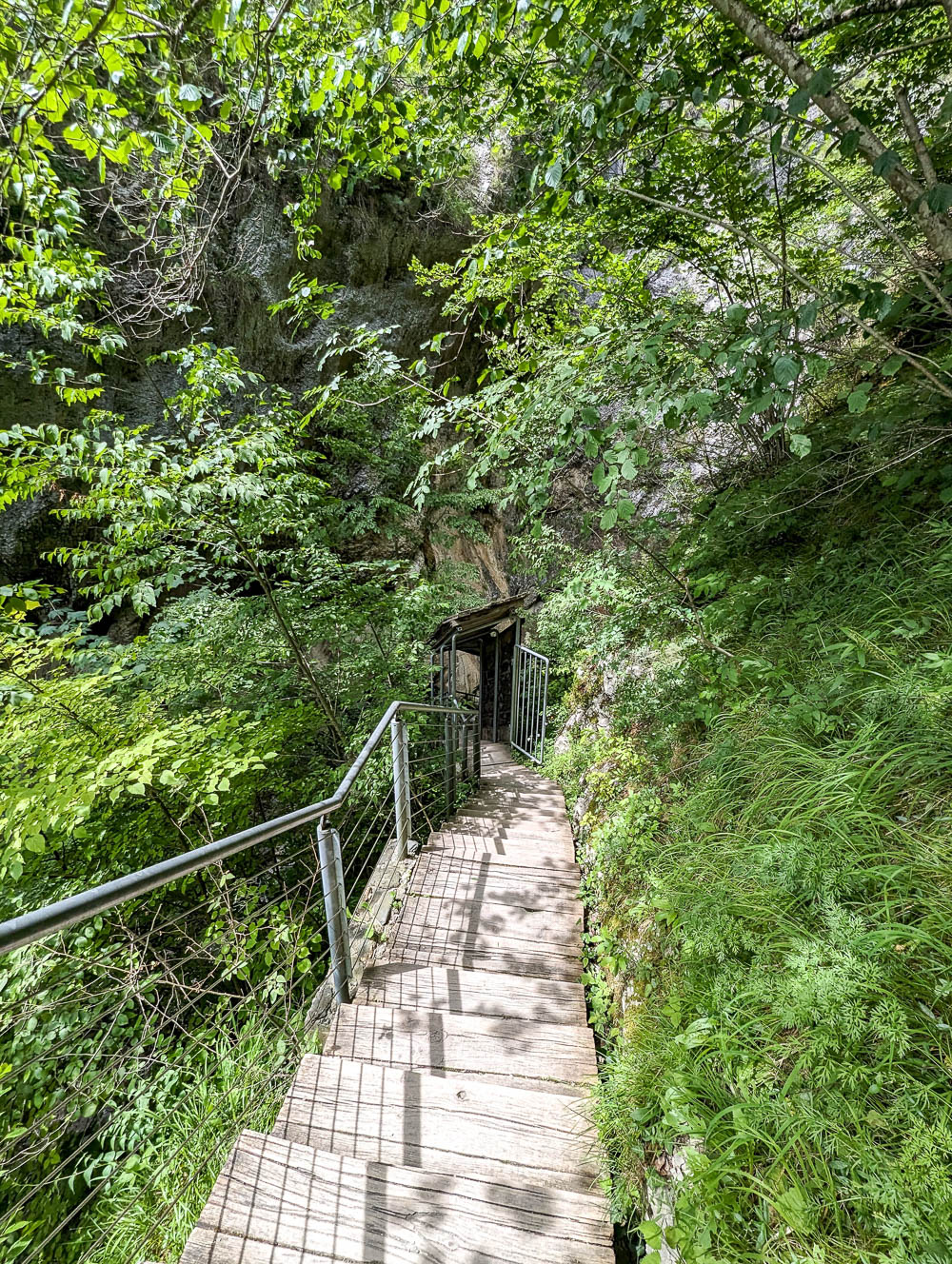
Like the hospital, the Partisan Printing House is located next to a difficult-to-access ravine. They printed, what they refer to as, “a counterweight to the extensive hostile propaganda.” Their productions called for continued resistance, kept the Slovenian language alive in the face of major denationalization policies, and spread the word to others about what was happening in Slovenia during the war.
Visiting the Partisan Printing House
Like the partisan hospital, visiting the printing house also requires walking along a wooded trail from the parking lot. Here, it’s about a 20-minute walk down a steep downhill footpath. You can find full instructions on how to get there on this page.
- Hours: Tuesday-Sunday from 9am-4pm (April 15 to October 15)
- Admission: 4€ for standard adult admission
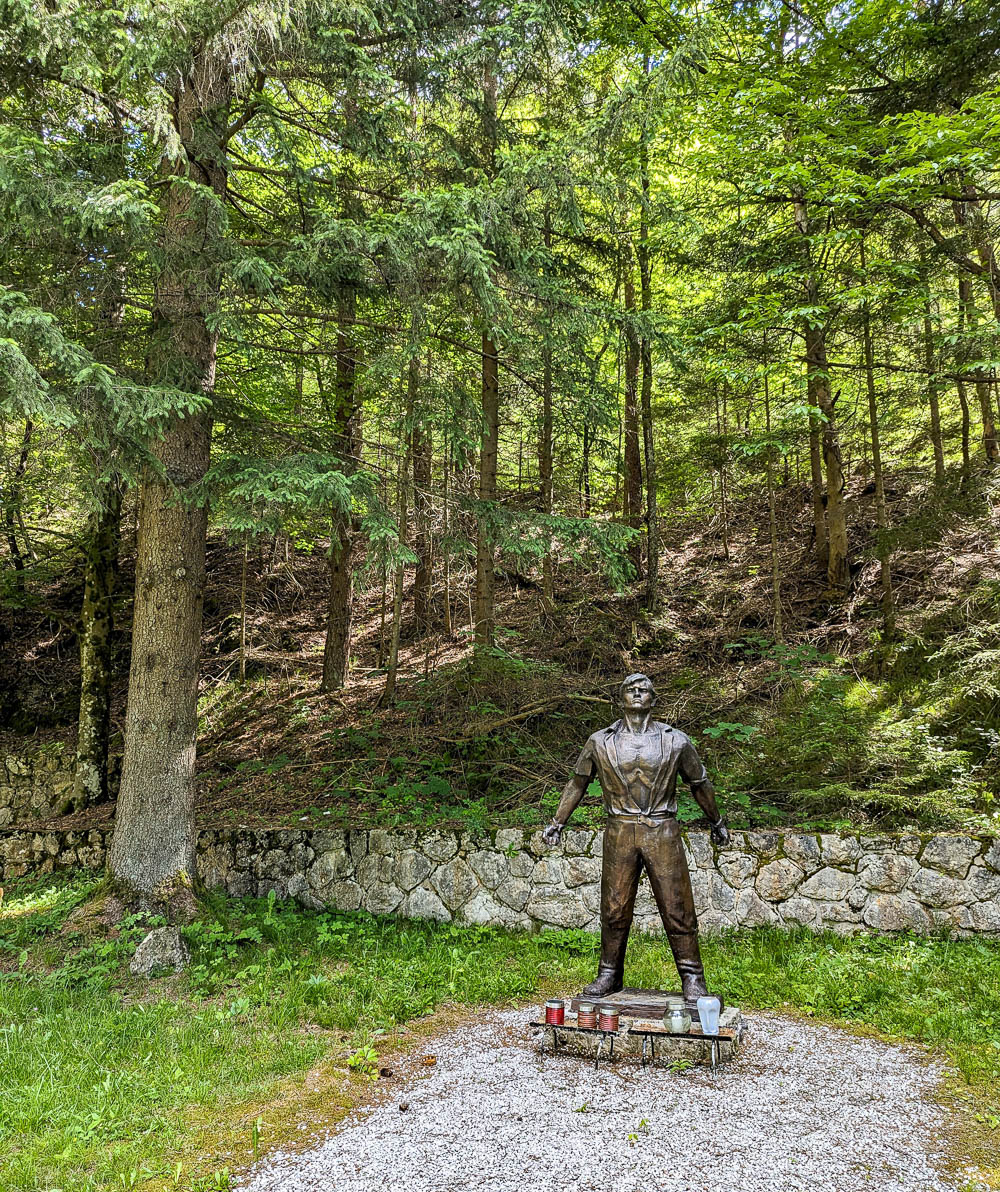
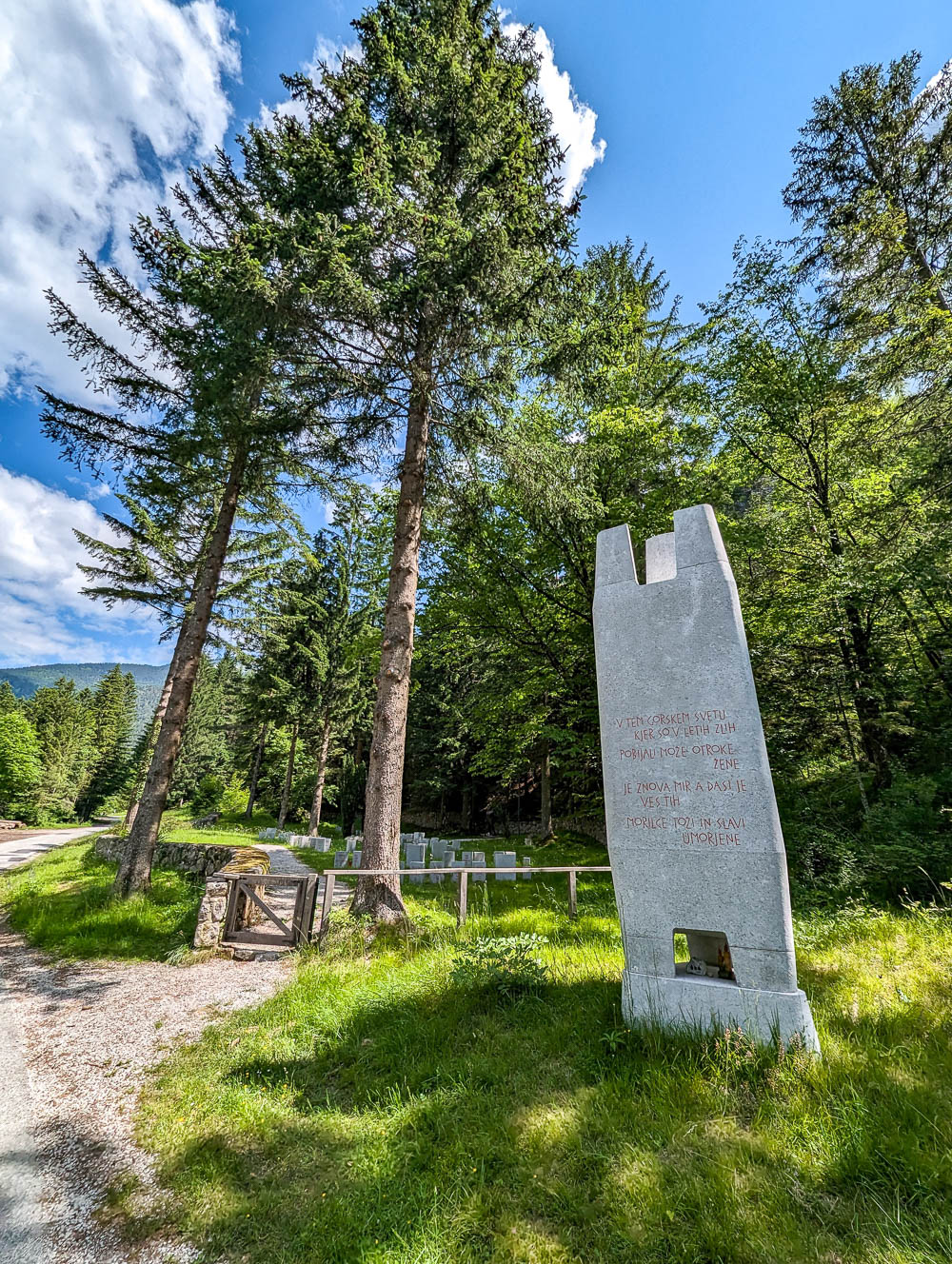
10. Museum of Hostages
Forty minutes north of Ljubljana is the town of Begunje na Gorenjskem and the Katzenstein Mansion. From 1941-1945 the Gestapo used this mansion as a prison to hold captured members of the resistance, 11,477 of them to be exact. Many of them were executed (849) and many others were sent to the concentration camps at Mauthausen and Dachau.
Today, the site of the notorious Begunje Prison serves as the Museum of Hostages. You can tour the prison cells, see the prisoners’ writings on the walls, and check out documentary material and other expressions of what life was like for the prisoners.
There are a total of 667 hostage graves at the mansion itself and in the nearby valley where you can visit the memorials and burial sites.
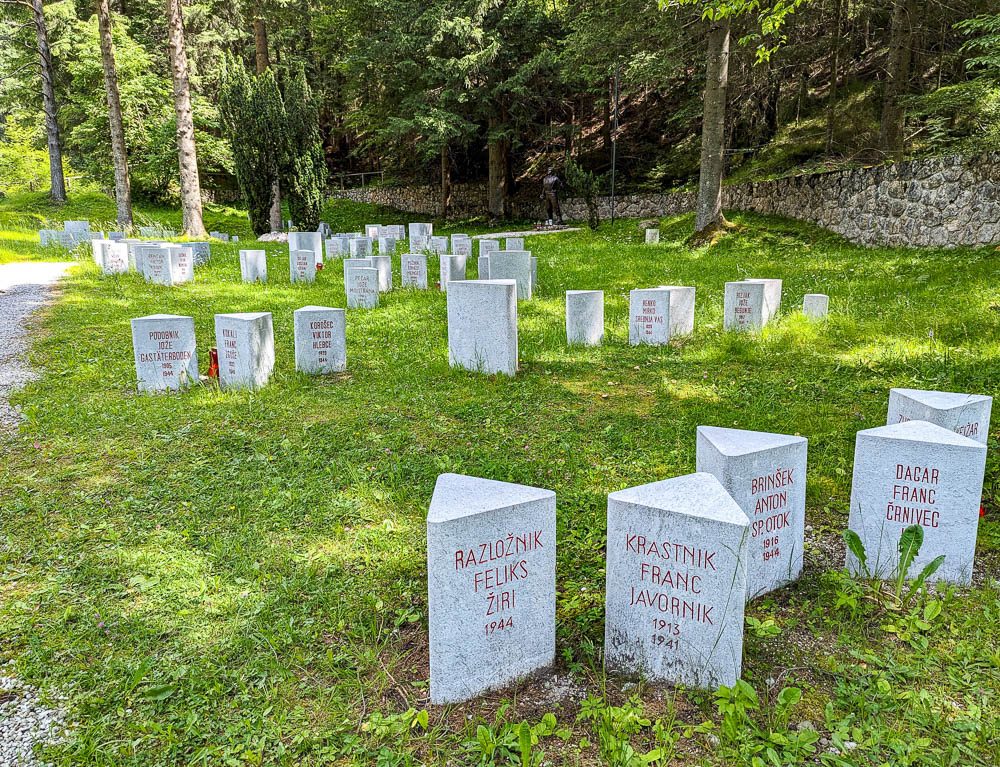
Visiting the Museum of Hostages
It’s vital to know that the Museum of Hostages is only open on Saturdays in July and August (10am-4pm). However, if you wish to visit the rest of the year, it’s totally possible, you just need to give them at least 3 days advance notice. Otherwise, they’re open on random Sundays throughout the year. Yes, it’s confusing, just click on “Visit Us” on this page.
Standard adult admission is €3, and the burial site/memorial in the Draga Valley is always open and free to visit.
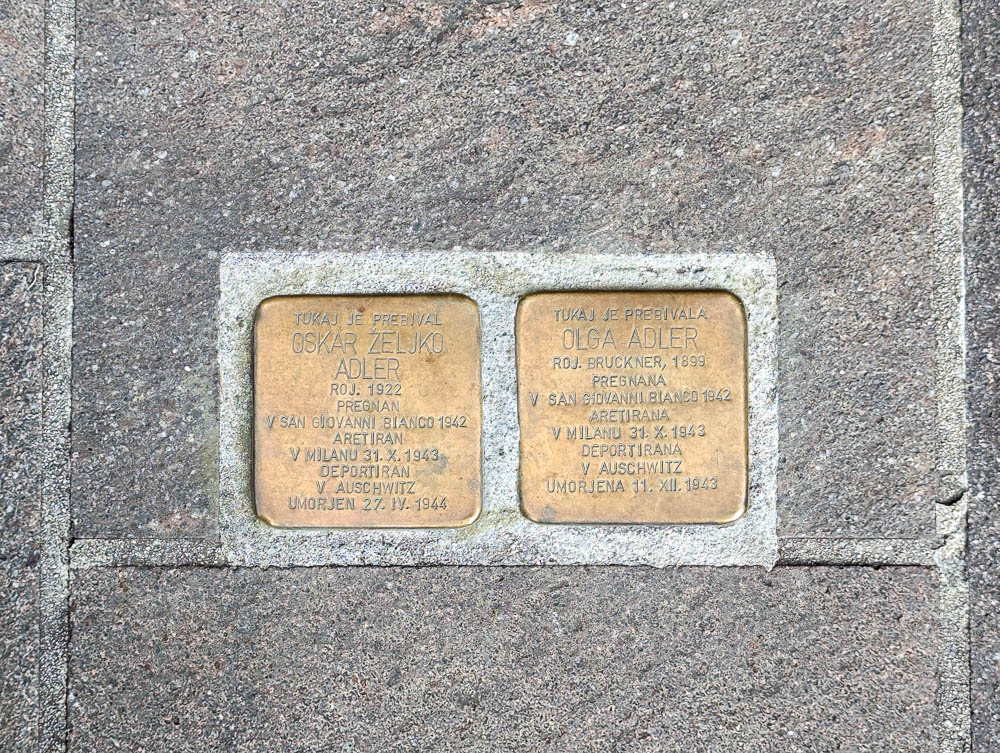
11. Stumbling stones
Last on the list of unique WWII sites in Slovenia are the country’s stumbling stones (known as Stolpersteine in German). As far as these tiny memorials go in terms of being unique to Slovenia, they aren’t; stumbling stones can actually be found in 21 European countries. But I do feel they count in terms of their overall uniqueness.
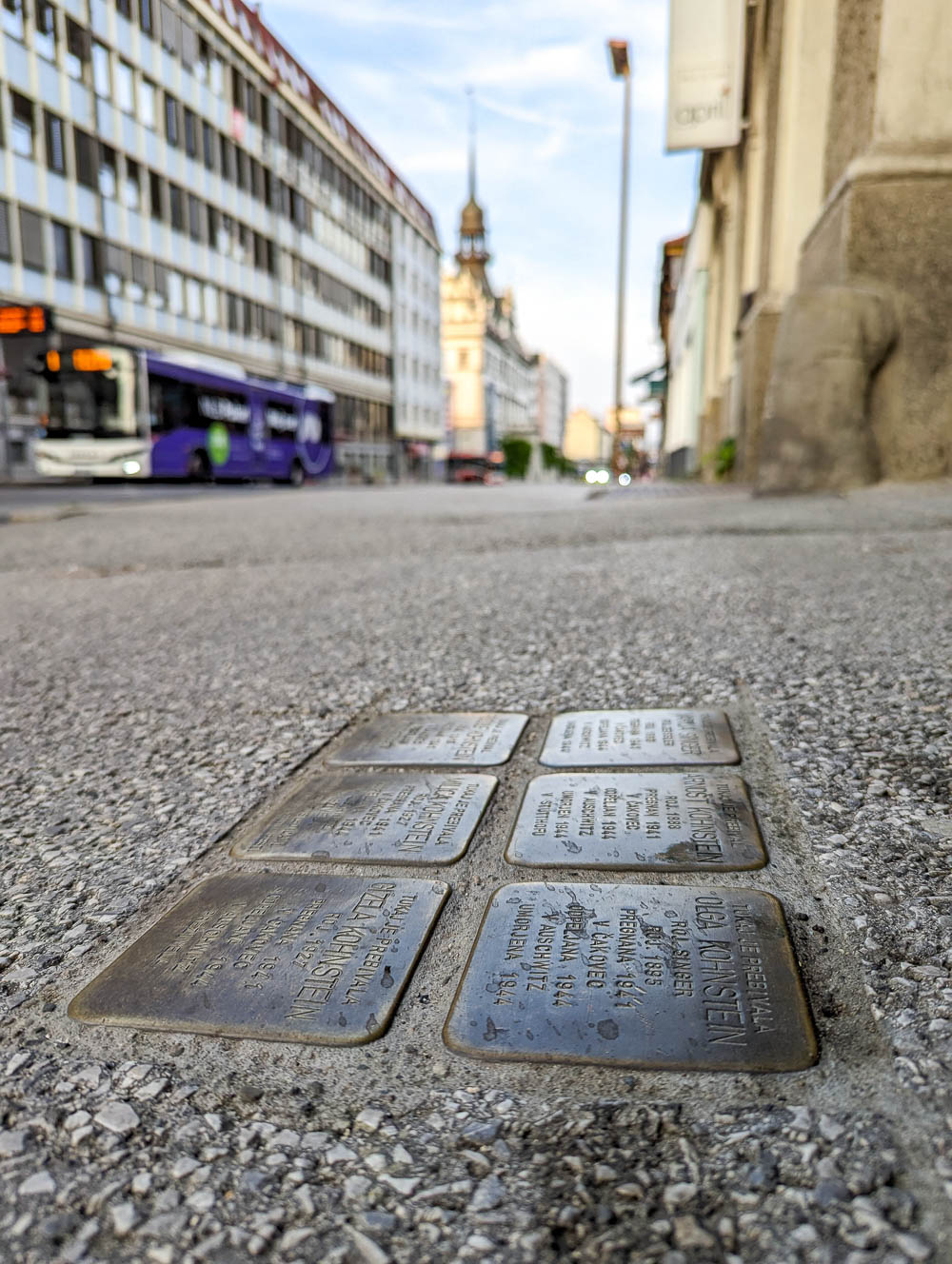
Stumbling stones are small brass memorial stones placed in the ground outside the entrance to the last known resident of a Holocaust victim. They typically contain the person’s name; dates like when they were born, when they were taken, and when they died; and their fate, i.e. which concentration camp they were taken to or whether they were executed on site.
These memorials are so small that they’re often missed completely, but you can find them all over Europe, especially in the bigger cities. Chances are you’ve walked right past some and not even known it.
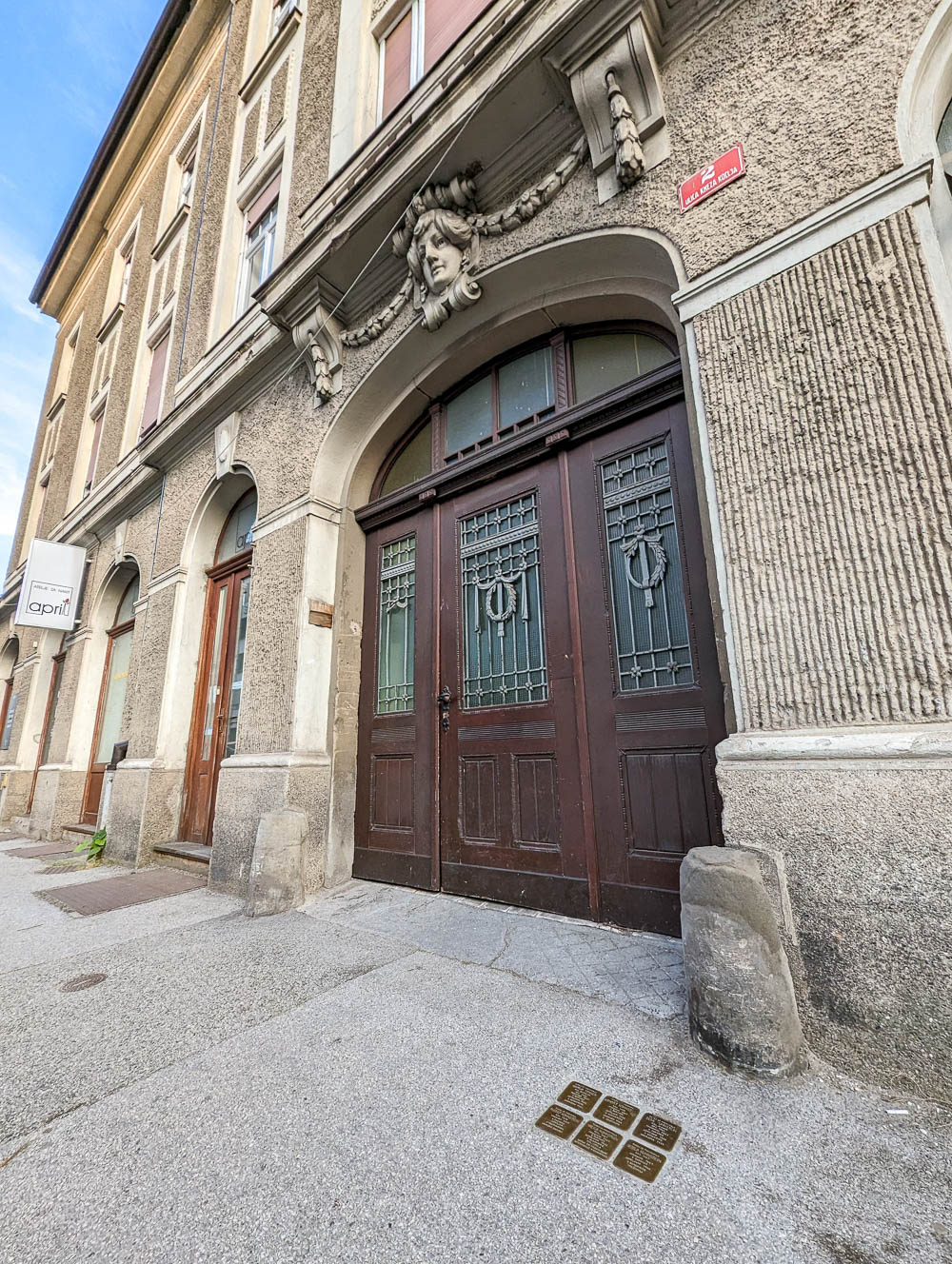
In Slovenia, you can find them in Ljubljana, Maribor, and Lendava and Murska Sobota in the northeast part of the country where much of Slovenia’s Jewish population lived prior to the war. The ones I can confirm can be found at:
- Resljeva cesta 8 in Ljubljana
- Igriška ulica 2 in Ljubljana
- Cankarjevo nabrežje 1 in Ljubljana
- Ulica kneza Koclja 2 in Maribor

WWII sites in Slovenia: honorable mention
Besides the 11 WWII sites in Slovenia mentioned above, there are actually so many worthwhile ones to visit here. Really, too many to list in one place. But, here are a few more that maybe aren’t exactly “unique” but are still worth visiting:
- Maribor Museum of National Liberation – Really good museum that covers tons of what happened in Maribor (and Slovenia) during WWII.
- Maribor National Liberation Monument – Large (strange-looking) bronze monument in a main Maribor square that’s engraved with one of the public proclamations about the shooting of 667 hostages as well as a handwritten farewell letter by Jože Fluks before he was executed.
- Ljubljana Museum of Contemporary History – One small room dedicated to WWII but the artifacts in there are plentiful and very well preserved.
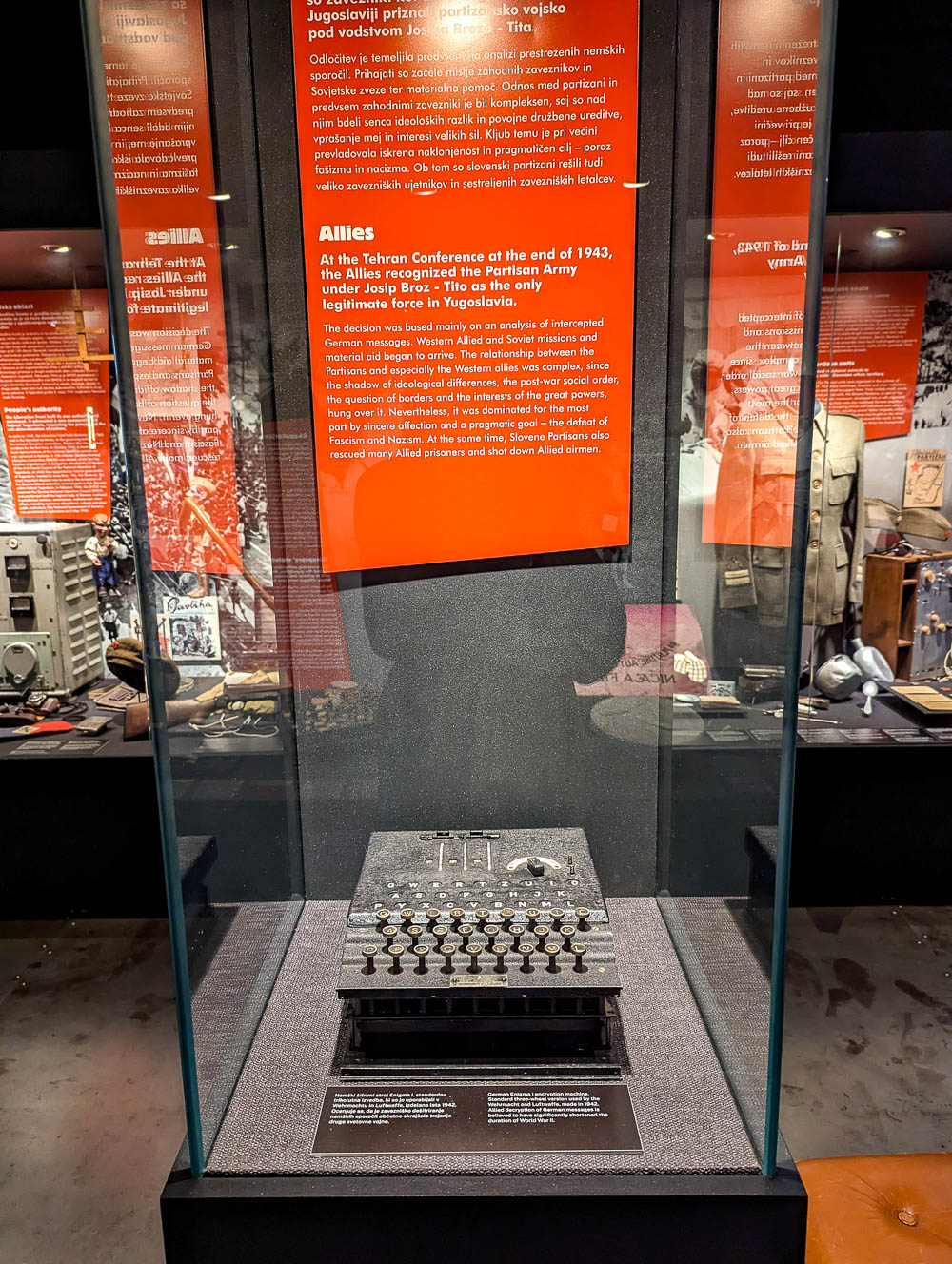
Where to stay in Slovenia
Slovenia is a small country but it’s worth moving around to check out the many different parts (and all of these WWII sites). Here’s a list of all the places I stayed on my June 2023 trip to Slovenia–all of which I highly recommend and wouldn’t hesitate to stay at again.
- Ljubljana: Hotel Slamič – Great location, really nice rooms, excellent breakfast included.
- Ljubljana: NEU Residences – Another perfect location, big apartment-style rooms with kitchens, beautiful rooftop pool.
- Lake Bled: Hotel Lovec – Excellent location, free parking, huge breakfast buffet, pool/hot tub, just great all around.
- Maribor: Hotel Orel – Perfect location in the city center, free parking, big breakfast buffet.
- Triglav National Park / Kranjska Gora: Garni Hotel Miklič – Great location with free parking, a wonderfully welcoming staff, super cozy hotel.
- Piran: Hotel Zala – Perfect location near the center, beautiful rooftop terrace/bar, nice rooms with huge bathrooms.
Check out all Slovenia hotel options here on Booking.com and Expedia.
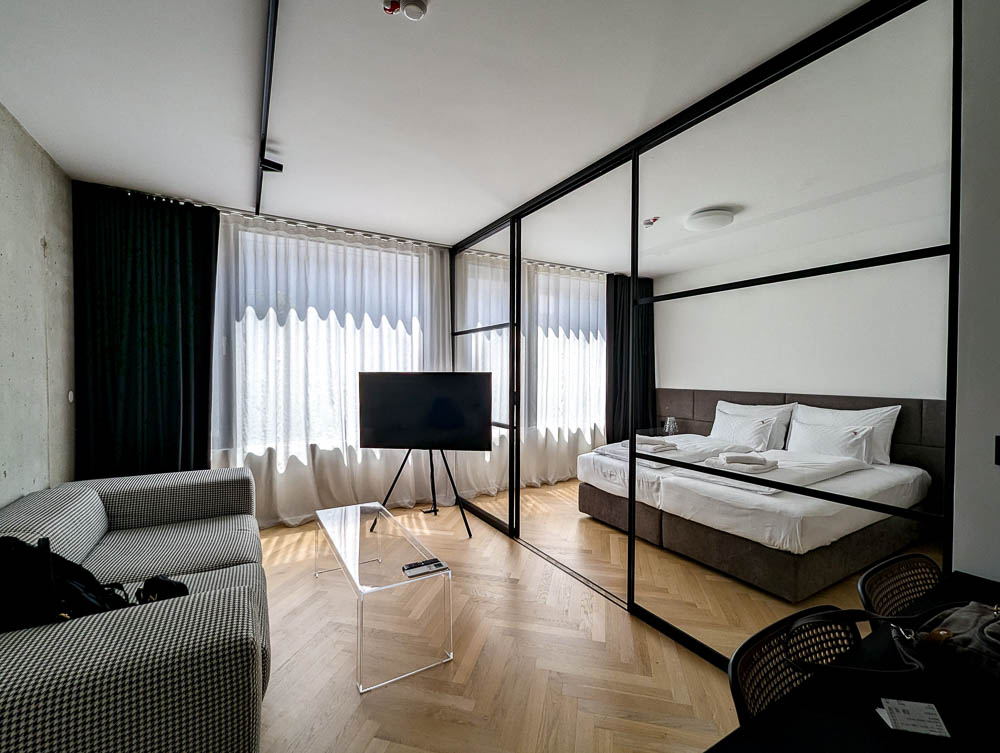
Books to read before visiting the WWII sites in Slovenia
There aren’t tons of books on Slovenian WWII history, but there are a few good ones that will mostly tell you what you need to know. Check these out:
- Prisoners of History by Keith Lowe (2020) – Specifically, Chapter 13 about Slovenia’s Monument to the Victims of All Wars
- Slovenia 1945: Memories of Death and Survival After World War II by John Corsellis and Marcus Ferrar (2010) – What happened after WWII explains a lot about what happened during WWII in Slovenia.
- The Italian Army in Slovenia: Strategies of Antipartisan Repression, 1941-1943 by Amedeo Osti Guerrazzi (2013)
- War Changes Everything: The Character, Courage, and Survival of a Slovenian Girl and Her Father During World War II by Stasha Seaton (2014)
- My Life Under Totalitarianism: 1941-1991 by Peter Staric (2015)
- To Walk with the Devil: Slovene Collaboration and Axis Occupation, 1941-1945 by Gregor J. Kranjc (2013)
Need a rental car while you’re here? Check out the best rental car deals in Slovenia here.

What to pack for your trip to Slovenia
When prepping for your trip to the WWII sites in Slovenia, don’t forget to pack these few essential items:
- Comfortable outdoor walking shoes. Many of the WWII sites in Slovenia are in the woods that require trail walking and light hiking to get to. Be sure to bring some solid nature-worthy shoes.
- European plug adaptors. You’ll need them to charge your devices here.
- Slovenia guidebook for all your other sightseeing. Here are options from Lonely Planet and Rick Steves.
- 4. This must-have Slovenia customs and culture guide. I bring these pocket-sized guides on every trip I take. This ones gives such good insight into the nuances of traveling in Slovenia.
More info for your visit to Slovenia
- Hotels: Find great places to stay on Booking.com (my go-to). Expedia and Hotels.com are worth checking too. VRBO is best for apartment rentals.
- Rental cars: Check out the best rental car deals here.
- Local tours & activities: Check out all the great local options from Viator and Get Your Guide here.
- Want more? See all my Slovenia posts here.
Like this post? Have questions about visiting any of the WWII sites in Slovenia? Let me know in the comments below. Thanks for reading.

Save this info, pin this image:
